Log Horizon by Xelkelvos
Basic Mechanics
Original SA postDue to being an engineering student with at least two projects in progress and two more in the wings, I didn't exactly have the time to do this like I intended. Spring Break has come around so, I'm making this a personal project, so I hope to not abandon it like
50%
90%
a significant number of F&Fs. This is also my first one and I'm not particularly well versed in analysis of RPG systems so if you have any input or particular odd things of note I might have missed, point them out.
So without further ado, here's the Log Horizon TRPG

Background
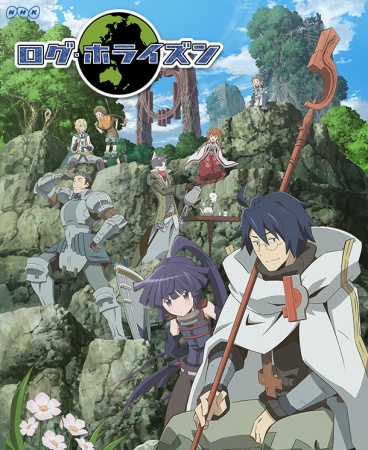
For those who don't know, Log Horizon is a light novel/web novel series in Japan that has been adapted into an anime currently on its second season. The series itself is about a group of people who have gotten sucked into an MMORPG called Elder Tale. This new world is a mix of their laws of physics and the game's and the people whowere sucked in are now their characters. In a sense, this means that PCs in this RPG are playing people who are playing video game characters. However, things like classes and levels make 100% in universe sense for the most part. If there was an actual TRPG that grogs think of when they bad mouth D&D4e that isn't 4e, this is the game that it would probably most resemble.
There are some discrepancies between this game and the game depicted in the source material. PCs do not have mana that can run out and combat more resembles that of D&D style combat than anything more freeform. However, elements like reviving at the nearest Cathedral (abstracted so they just rejoin the party in the next scene) and Aggro (called Hate) are preserved.
Since this is from Japan and no official English translation exists as of yet. Instead, this comes as a fan translation so if there's anything unclear or missing, blame them or terms that seems to pop up that are seemingly interchangeable, blame either the translator or the author.

Basic Mechanics
I've introduced these slightly out of order as stats and such are introduced in the Character Generation section and not here while more details on Abilities (like what they actually do) are more elaborated upon in the GMing section. This may be based on the original book or the translator's own order. Either way, I'm introducing them in such a way that makes more sense.
Rolling
Like most Japanese TRPGs, the basic set of dice used are 2d6+Attribute with some abilities adding or subtracting dice to a minimum of one die. As part of this, there's also critical rolls and fumbles. The former occurs when two sixes are rolled, the latter when two ones are rolled. A critical is an automatic success and a fumble is an automatic failure (and the roll is set to zero if some sort of numerical value is needed). Like any RPG, a player is generally called to roll when they want to do a thing. Most things are generally some sort of action or Skill.
Skills
Skills are what one gets when they take Class Features, Feats and Skills from D&D and puts them into one big pot to compete with each other in terms of things one gets when leveling up besides stat boosts. Alternatively, they're Moves from the *World games. Each Skill has a timing, a target, a range and classification tags in addition to their effects. These effects range from basic attacks to stat boosts to spcial techniques unique to one's race or class.
Fate Points
The amount of Fate Points a character starts out with is based on their Skills and their Race. Fate Points can be used to do four things:
-
To pay a cost in a Skill that requires it
-
Increase the number of dice in a roll before it's made by 1
-
Reroll all dice in a roll
- Remove a Bad Status affecting you
Side note: Bad Statuses will be explained as part of combat. In essence they are statues that are bad to have.
Stats, Scores and Attributes
Stats
There are four basic stats: Strength (STR), Dexterity (DEX), Power (POW), and Intelligence (INT). Strength is the Phyical stat, Dexterity is the speedy that, Power is will and charisma, and Interlligence is the smart stat. Simple.
Ability Scores
There are a grand total of 11 Ability Scores, each fed by one of the 4 Stats. These are what are actually checked and rolled rather than the Stats themselves.
The Abilities are: Athletics (STR), Endurance (STR), Disable (DEX), Operate (DEX), Perception (POW), Negotiation (POW), Knowledge (INT), Analyze (INT), Evasion (DEX), Resistance (POW), Accuracy (The highest of Stats)
To calculate an ability score, divide the Base Stat by 3 (rounded down) and add any other bonuses to the score. For example, a PC with a Base STR of 5 with a +1 Bonus to Athletics has an Athletics score of 2. (5/3 = 1.66667 -> 1)
-
Athletics is generally for doing athletic stuff like climbing or jumping or balancing. It's also used for Scouting
-
Endurance is for exertion over long periods of time or withstanding harm from the elements, illness, suffocation or starvation. Doesn't come up that often as far as I'm aware.
-
Disable is for picking locks and disabling traps or other mechanisms. It's also for setting said traps or mechanisms up. Disabling traps and such requires them to be Analyzed first however
-
Operate is one of the broader Ability Scores as it determines one's ability to operate a vehicle like a boat or a horse drawn carriage as well as playing an instrument or generally using any magical or technological device. Thus being a violin virtuoso makes you equally able to operate a hi-tech airship.
-
Perception is what it says on the tin. It's for detecting small changes or clues in the environement or detect the lies of another individual.
-
Negotiation is the general talk Ability. From making nice to telling lies, this is what it's for.
-
Analysis is identifying strange objects or understanding complex mechanisms or codes. It'll also used to figure out how much the 20 Murloc Pelts the villager asked you for are worth if you just sold them instead of finishing that stupid quest.
-
Knowledge is the book learning stat is for what things like Analysis or Perception doesn't cover. It's of particular use in identifying enemies.
-
Accuracy is one's ability to hit. Of particular note is the fact that it keys off of the highest stat. This makes being a Muscle Mage or a Nerd Knight perfectly viable options.
-
Evasion is dodging things. Most Physical attacks contest this.
- Resistance is the ability to resist magical or spiritual attacks. Most Magical attacks contest this.
Other Attributes
Just like Abilities, these are generally based off of Stats and all can be boosted by Skills or items
-
Max HP = sum of class and racial modifiers
-
Starting Fate = racial modifier
-
Attack Power = Attack Value of one equipped Item
-
Magic Power = Magic Value of one Equipped Item
-
Recovery = 0
-
Physical Defense = STR x 2
-
Magical Defense = INT x 2
-
Initiative = STR + INT
- Speed = 2
And that covers some of the basics of this game. My next post will be all of the different Classes and Races (since I don't think I can fit them here). Pictured below is the cover of the core book and is available from Amazon.jp. The only other books related to the TRPG are Replays which are basically retellings of a session or more that may or may not include extra content. It's a
 thing.
thing.
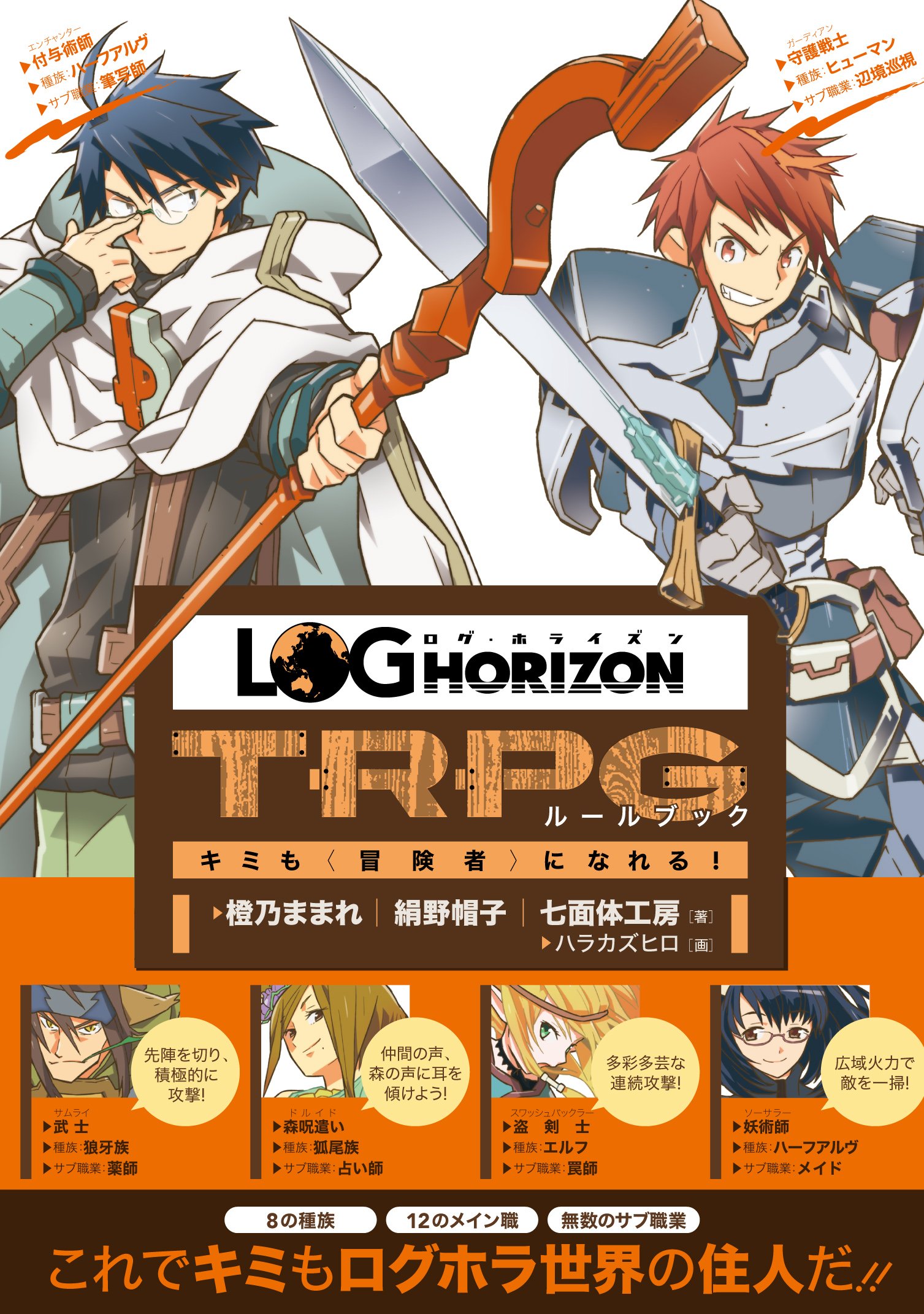
Edit: Update Ability Scores because I forgot one vital step to calculation.
Character Generation
Original SA post
の文字を構築する方法を学びましょう!
[Let's Make a Character!]
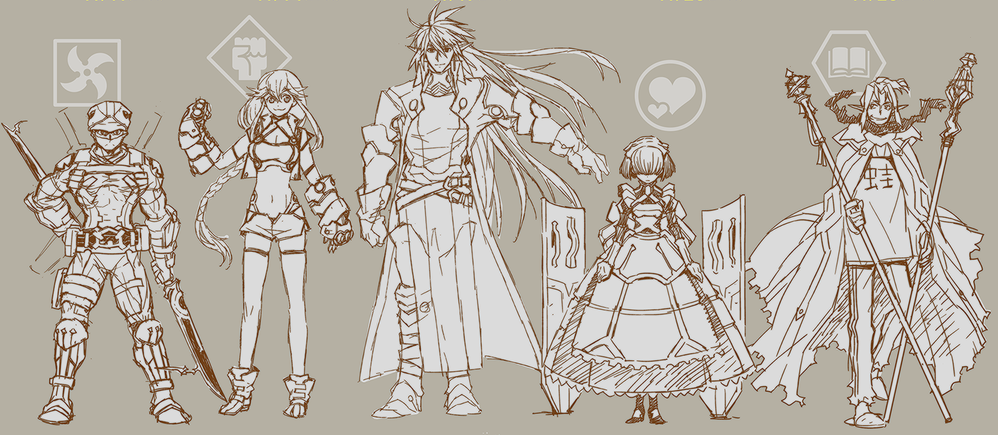
Pictured: Leonardo, the Ninja
Before I get started with Char Gen, I forgot to mention one major thing in my previous post and a few minor things.
Correction to Stat
I apparently missed this:
quote:
Add any modifiers from your skills to your Base Stats (these can raise your
Base Stats above 7). Then calculate your final Ability Scores by dividing the
Base Stat by 3 (round down).
Tags
Every Enemy, item, Skill, and thing in the environment has their own set of tags. While these tags are not the complete description of whatever they're attached to, they help to categorize them into preexisting categories for use. For example, every Skill has either the [Combat] or the [General] tag which basically indicates when its meant to be used. Items and equipment have tags such as [One-Handed], [Consumable], or [Rare]. Enemies have tags that indicate what type of creature it is, like [Construct] or [Fairy] or [Undead]. Also, as a note, certain mechanisms are also conisdered Enemies, though they more resemble Traps. These have the tag [Gimmick]. Another special tag is the [Mob] tag. Enemies with this tag are basically mooks and are treated as such. A number of Skills specifically reference enemies with this tag.
Hate
Most MMOs have some sort of Aggro mechanic which tells the AI whom to target. In this game, Aggro is renamed to Hate. For simplicity, all enemies run off of the same Hate meter so pissing off one enemy pisses them all off instead of just one. There are two statuses related to Hate: Hate Top and Hate Under. Having the most Hate means that that character is Hate Top. Everyone else is Hate Under. If two or more are tied for Hate Top, they're both considered Hate Top.
To incentivise attacking those at Hate Top and disincentivise attacking those at Hate Under, those at Hate Top take extra damage when successfully hit equal to [their current Hate level x enemy Hate Multiplier] while those at Hate Under get a +2 to their [Dodge Check]. While I'm not sure of how well the math peters out (note that the Hate Under bonus will never scale), it is an interesting mechanic to incentivise targeting and having a mechanic that makes in-universe sense. Of final note, whenever a player fails a [Dodge Check] by an enemy attack, they immediately get -1 Hate.
Other things I forgot
Skills have more than a resemblance to 4e's own set of actions with usage paralleling AEDU. I personally haven't played 4e, but at a cursory glance, the LOG Horizon RPG seems to borrow a bit from the format.
Now back to Char Gen.
Character Generation
Every character starts at Rank 1 (i.e. Level 1) and has a Main Class and a Race. The Class will also determine their Archetype. Every archetype consists of three classes (with a total of 12 classes to chose from). There are also 8 races to chose from. These will determine your starting basic stats, ability scores and attributes. Each class also starts with three starting skills. Each class is also only limited to using equipment with the [Light Armor], [Accessory] and [Bag] Tags as well as those listed as part of their class
Character images are from the Lite Novels unless otherwise specified.
Archetypes and Classes
Archetype: Warrior
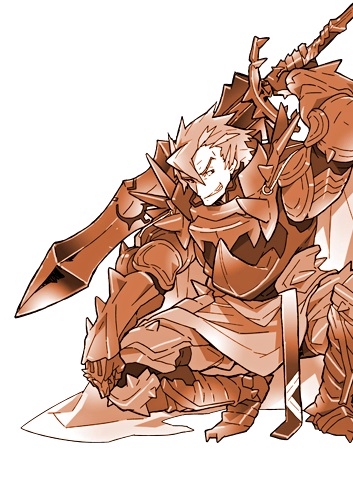
The classic "Edgelord" equipment set
Warriors are generally frontline combatants with Skills that allow them to take hits meant for other, squishier characters. Other Skills in this archetype also allow you to manipulate Hate to draw fire away from those characters or increase your damage. However, their damage output pales in comparison to the Weapon Master classes. In 4e terms, they'd be Defenders or Controllers generally. They are also not weaker than casters in terms of capability.
Included among them are the Guardian, the Samurai, and the Monk.
Archetype: Weapon Master
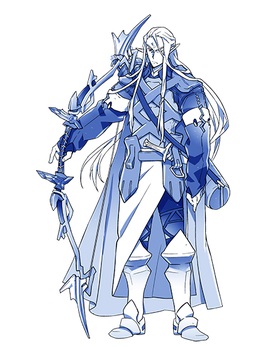
In video game terms, Weapon Masters would be called the Physical DPS for their high damage output. Most Weapon Master Skills boost Damage in some form or another with extra tricks to differentiate them. In 4e terms, they'd be Strikers. Unlike the Rogue which would presumably share their archetype, they also do not suck in capability when compared to casters. All Weapon Masters start with the Skill, Blade Artist which gives a +1D bonus to [Hit Checks].
Included among them are the Assassin, the Swashbuckler and the Bard.
Archetype: Healer
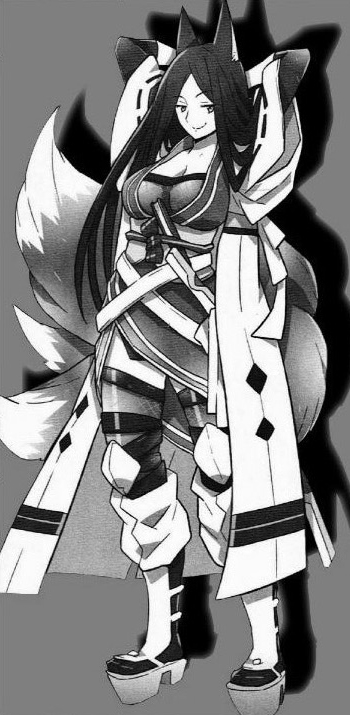
She'll heal you up real nice , if you know what I mean
They heal. They revive. They make sure people around them don't die from the damage that the Warrior didn't stop from getting through or that the Warrior took for them. They can even do damage in battle if they have to. In 4e terms, they'd be Leaders. All Healers start with the trademark Skill of any healer, Heal. For 1 Hate, a target recovers [Magic Power+ Recovery + 3D] HP. For an extra 1 Fate, they recover 10 additional HP.
Included among them are the Cleric, the Druid and, the Kannagi.
Archetype: Mage
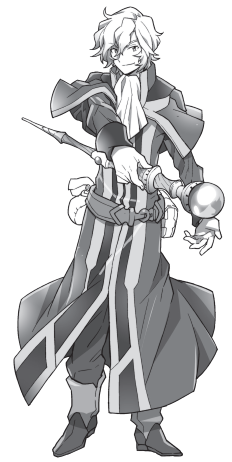
Included among them are the Sorceror, the Summoner, and the Enchanter.
Class: Guardian

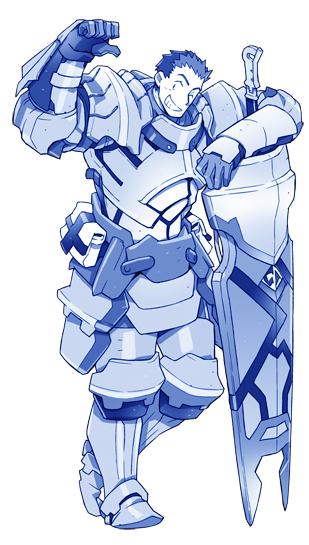
Your best bro and troll of the battlefield
Starting stats: 4 STR 2 DEX 1 POW 3 INT 50 HP +8 HP Mod
Can Equip: [Blade] [Spear] [Hafted] [Bow] [Shield] [Heavy Armor] [Medium Armor]
The tankiest of Tank characters. They typically have the heaviest armor and the biggest weapons. More specifically, they're skillslend them to taking hits for other characters and pushing enemies where they want them to be. They're generally the types who lead the charge into battle and both deal and recieve the first blows. They're also one of three classes that can equip shields.
Starting Skills:
Battle Master - Start combat with +2 [Accuracy] and +1 Hate
Anchor Howl - At the beginning of the round, pay 1 Hate, get [Cancel: STR] (Cancel will be explained in full later, simply: all damage they take gets subtracted by STR)
Decoy Action - During movement, target ally gets -2 Hate and if you pay 1 Fate, can move Speed Squares.
Class: Samurai

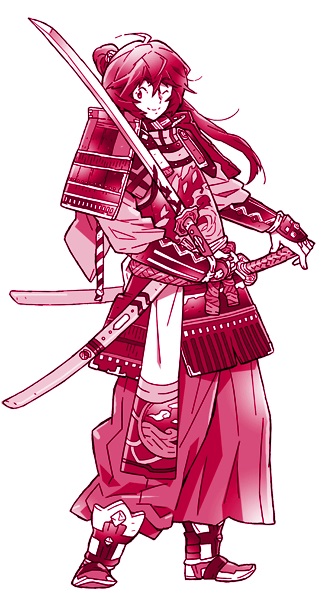
Starting Stats: 4 STR 2 DEX 2 POW 2 INT 50 HP +8 HP Mod
Can Equip: [Katana] [Spear] [Hafted] [Bow] [Heavy Armor] [Medium Armor]
The standard version of this class is the Pirate. However, Japan, like many other regions have their own alternate version of the class. For Japan, it's the Samurai.In the series, Samurai have a number of very powerful abilities that can be chained together for maximum offensive and defensive capability, but have very long cooldowns. In this game, Samurai remain the damage powerhouses of the Warrior Archetype in exchange for the battlefield trolling capabilities of the Guardian or the mobility of the Monk. In both cases, the Samurai is meant to be the opposite in playstyle of the Monk.
Starting Skills:
Eternal Battlefield - +2 [Accuracy], +5 [Initiative] in the first round of combat
Warrior's Challenge - At the beginning of each round of combat, get 1 Hate and an ally gets -3 Hate
Split-Second Awareness - Once per scene, perform a Perfect Defense ala Exalted.
Class: Monk

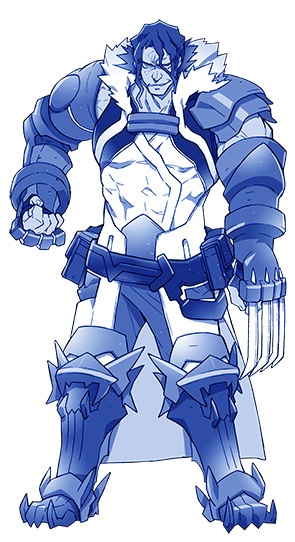
Starting Stats: 4 STR 4 DEX 2 POW 2 INT 55 HP +9 HP Mod
Can Equip: [Martial Arts] [Throwing]
The last of the three Warrior classes and technically the least tanky. Unlike the other two Warriors, Monks cannot wear anything above Light Armor. To compensate for this, they have the highest starting HP and the highest HP growth rate out of all of the classes. Also, they are the only class able to use Martial Arts Weapons. In the source material, the class is known for setting up long combos of skills with very short cooldowns that get bonuses if done in a certain order. The TRPG does not do this fortunately/unfortunately. Instead, the Monk is a high mobility controller and defender.
Starting Skills:
Martial Arts - +2 [Accuracy] and +1D to [Evasion] and [Resistance] checks
Laughing Taunt - As a minor action, target ally gets -2 Hate
Shadowless Kick - After making a successful [Dodge Check], gain 1 Hate and, if the enemy has the [Mob] tag, they're eliminated. If you have the highest Hate, the enemy takes 5 damage.
Class: Assassin

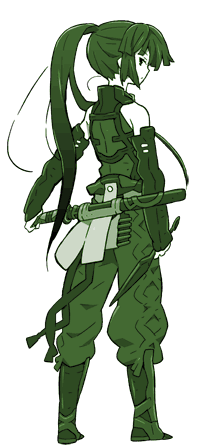
Starting Stats: 2 STR 4 DEX 3 POW 1 INT 40 HP +5 HP Mod
Can Equip: [Blade] [Katana] [Whip] [Bow] [Light] [Medium Armor]
They are the archetypical Ninja/Rogue in terms of being sneaky motherfuckers who will stab you in the back while they're hiding right in front of you. They can deal the greatest amount of damage but are a bit wanting in Skills that help their defense if they're either out of hiding or at the bad end of an attack roll.
Starting Skills:
Blade Artist
Assassinate - Once per Scene, for 1 Hate and up to 3 Fate Points, you can deal an additional [(Spent Fate + Skill Rank) x 7] damage on a damage roll of a [Weapon Attack].
Blade Sweeper - At the end of every Round, at the cost of 1 Hate, if a Target's HP is less than your POW x 3 or they have the [Mob] tag, they're eliminated.
Class: Swashbuckler

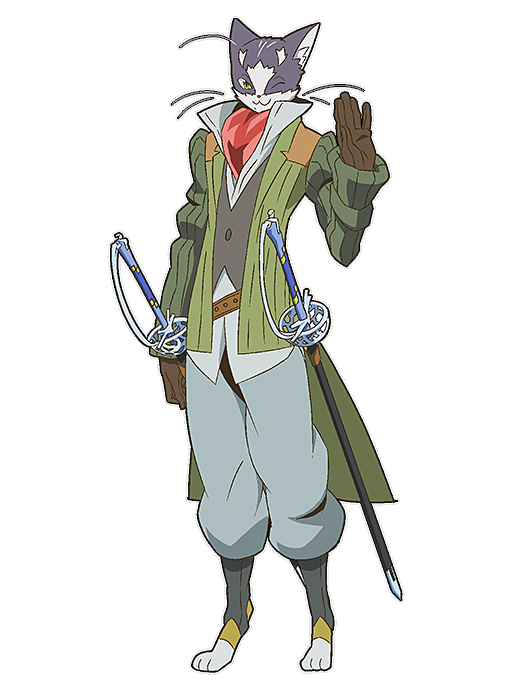
Pictured: This cool cat
Starting Stats: 3 STR 4 DEX 2 POW 1 INT 40 HP +6 HP Mod
Can Equip: [Blade] [Hafted] [Whip] [Throwing] [Shield] [Medium Armor]
Where the Assassin is great when going mano a mano, the Swashbuckler makes up for it by being to take on all comers and slaughtering them all. The Swashbuckler also makes particular use of stacking the Status effect known as Pursuit on targets, maximizing their damage as they do so. Because they can also equip a shield, they're more defensively capable than their other two counterparts.
Starting Skills:
Blade Artist
End of Act - For 1 Hate, once per scene or at the cost of 1 Fate if a [Mob] enemy has taken at least 1 damage from the damage roll preceeding this skill, that enemy is eliminated.
Opening Gambit - Once per Scene, for 1 Hate, you can distribute a number of stacks of [Pursuit: 7] to Skill Rank number of targets. 1 or 2 Fate can be spent to add 1 or 2 more additional stacks respectively. (Pursuit is another status effect that'll be explained in the combat section. In short, it's extra damage that can be dealt when damage is dealt).
Class: Bard

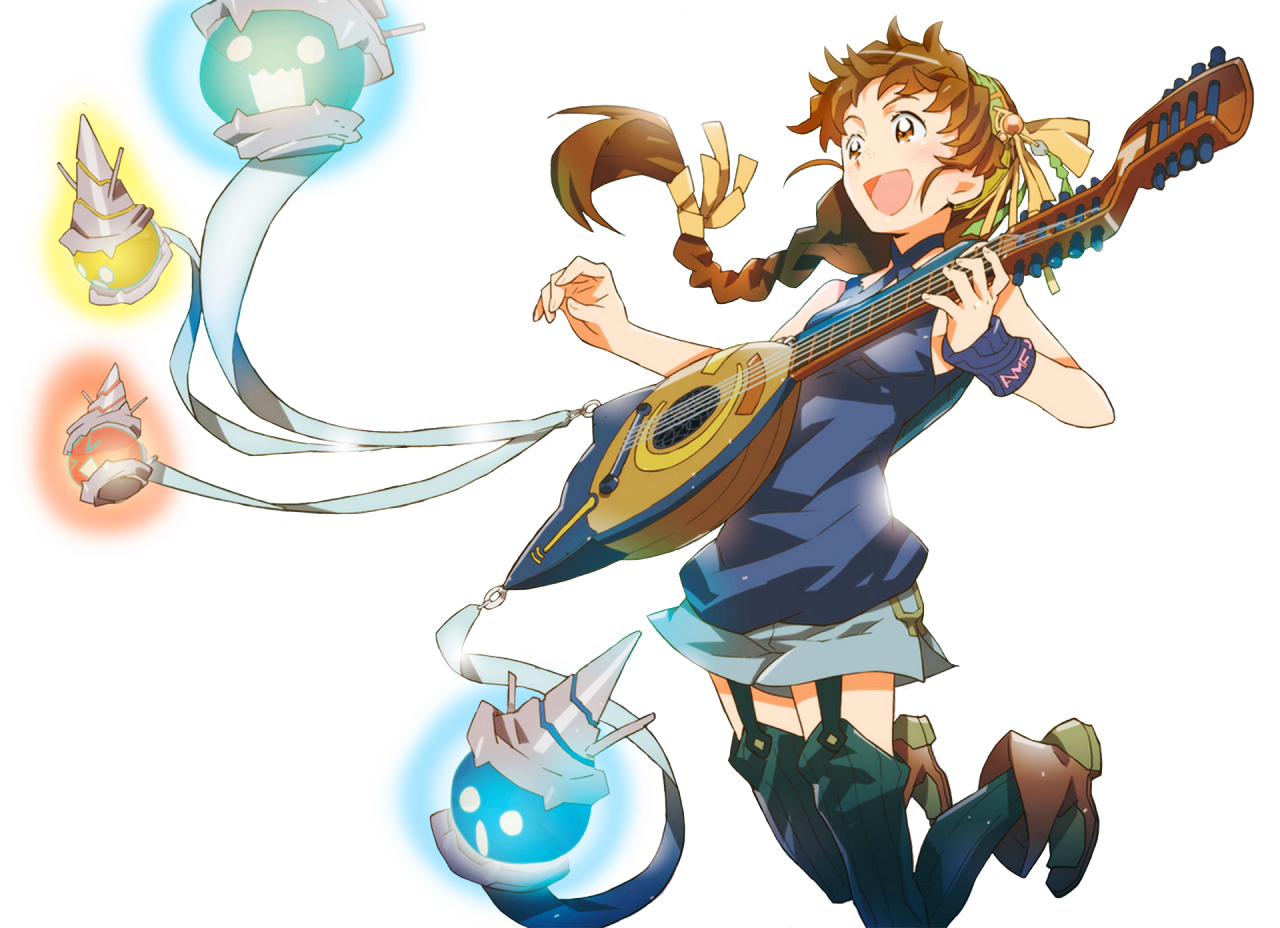
I'd get the LN version of the above chracter, but they didn't exactly look equipped like a Bard (no instrument picture), so they get to be special and have this instead.
Starting Stats: 2 STR 4 DEX 2 POW 2 INT 40 HP +5 HP Mod
Can Equip: [Blade] [Spear] [Hafted] [Whip] [Bow] [Instrument] [Medium Armor]
Classic to any RPG are the musically based support class. What they're doing alongside the Assassin and the Swashbuckler is a bit of a mystery, however Bards are not without a few tricks. Unique to them are Harmony Skills which are wide area buffs and do not technically require them to have an Intrument on them equipped to use. Additionally, they have Instrument Skills which do require having an Instrument equipped, but are more powerful than their harmonic counterparts and can be used offensively as well. Proper placement and targeting of these skills can make even the Enchanter feel impotent.
Starting Skills:
Blade Artist
Maestro Echo - Once per scene, for 1 Hate and up to 3 Fate, a target gets +[(Spent Fate + Skill Rank) x 5] to their damage roll as a bonus.
Any one Skill with the [Harmony] tag. Harmony skills are activated at the beginning of the round and require gaining 1 Hate per round to maintain it. By default only one Harmony Skill can be active at a time.
Class: Cleric

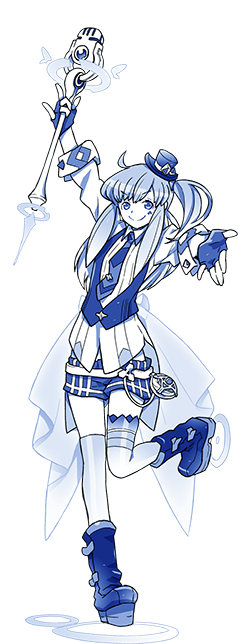
Starting Stats: 3 STR 0 DEX 4 POW 3 INT 40 HP +6 HP Mod
Can Equip: [Blade] [Hafted] [Magic Stone] [Shield] [Heavy Armor] [Medium Armor]
The archetypical Healer and the best at doing so. As one of the few classes that can wear both Heavy Armor and Shields, Clerics need not fear standing right next to the tank and supporting their efforts. Of note, the Cleric is the only Class that can effectively Dual Wield Shields to maximum effect.
Starting Skills:
Heal
Grace of Faith - +2 [Accuracy] and +1 [Resistance]
Reactive Heal - For 1 Hate, and [1+Skill Ranks] per Round, immediately after damage is dealt to a target, you can heal them for 2D.
Class: Druid

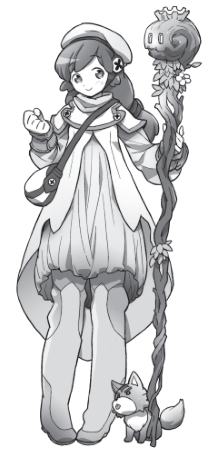
Beware the fearsome Druid and their mighty animal familiar!
Alt: The most kawaii hippie
Starting Stats: 2 STR 1 DEX 4 POW 3 INT 35 HP +5 HP Mod
Can Equip: [Spear] [Hafted] [Whip] [Magic Stone] [Medium Armor]
Where the Cleric is best at direct Healing, the Druid shines with recovery over time. In addition to recovery, the Druid has two other tricks up its sleeve to make them a rather well rounded class. The first one is
Starting Skills:
Heal
Totem Grace - +3 [Accuracy], +POW to [Physical Defense]
Heartbeat Healing - At the beginning of the round, for 2 Hate, target gets [Regen: Magic Power + 10]. (Regen triggers at the end of each round).
Class: Kannagi

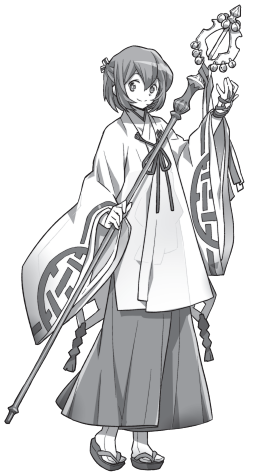
Starting Stats: 1 STR 3 DEX 4 POW 2 INT 40 HP +5 HP Mod
Can Equip: [Katana] [Bow] [Magic Stone]
Like the Samurai, the Kannagi is the Japanese counterpart to the internationally
used Medium. Where the Cleric recovers damage after it's dealt, the Kannagi prevents it before it happens. This is done with use of giving out the Barrier status. Another thing that'll be explained in more depth later, what it does, simply, is it prevents any sort of loss of HP, either via damage or other effects. In a sense, it's a pool of temporary HP that gets taken before actual HP. When compared to the other two Healers, the Kannagi also has the most movement tricks in their repetoire.
Starting Skills:
Heal
Guardian of Souls - +2 [Accuracy] and during the beginning of each round, they can pick one Skill and reduce its Hate cost by 2 to a minimum of 0
Purification Barrier - For 2 Hate, at the beginning of the round, a target gets [Barrier: Magic Power + Recovery + 15]. Paying 1 Fate increases the Barrier rating by 10.
Class: Sorceror

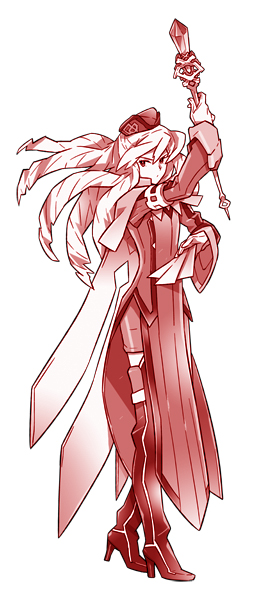
Starting Stats: 0 STR 3 DEX 3 POW 4 INT 35 HP +4 HP Mod
Can Equip: [Staff] [Light] [Magic Stone]
For sheer magical destruction, the Sorceror is the go-to class. Their skillsare decked out with all sorts of magical attacks with a heaping helping or AoEs to boot. However, two things keep them under control. The first is their lack of bulk. The Sorceror is tied for last with the Enchanter in HP, HP growth and armor so standing too close to the frontline is a risky proposition. Second, many of their spells, incur large amounts of Hate. Whereas most other classes generate 1 or 2 Hate with their offensive skills, Sorcerors can generate up to 5 Hate per attack.
Starting Skills:
Ultimagica
Spell Maximize - It's the same as the Assassin's Assassinate except for a [Magic Attack]
Class: Summoner

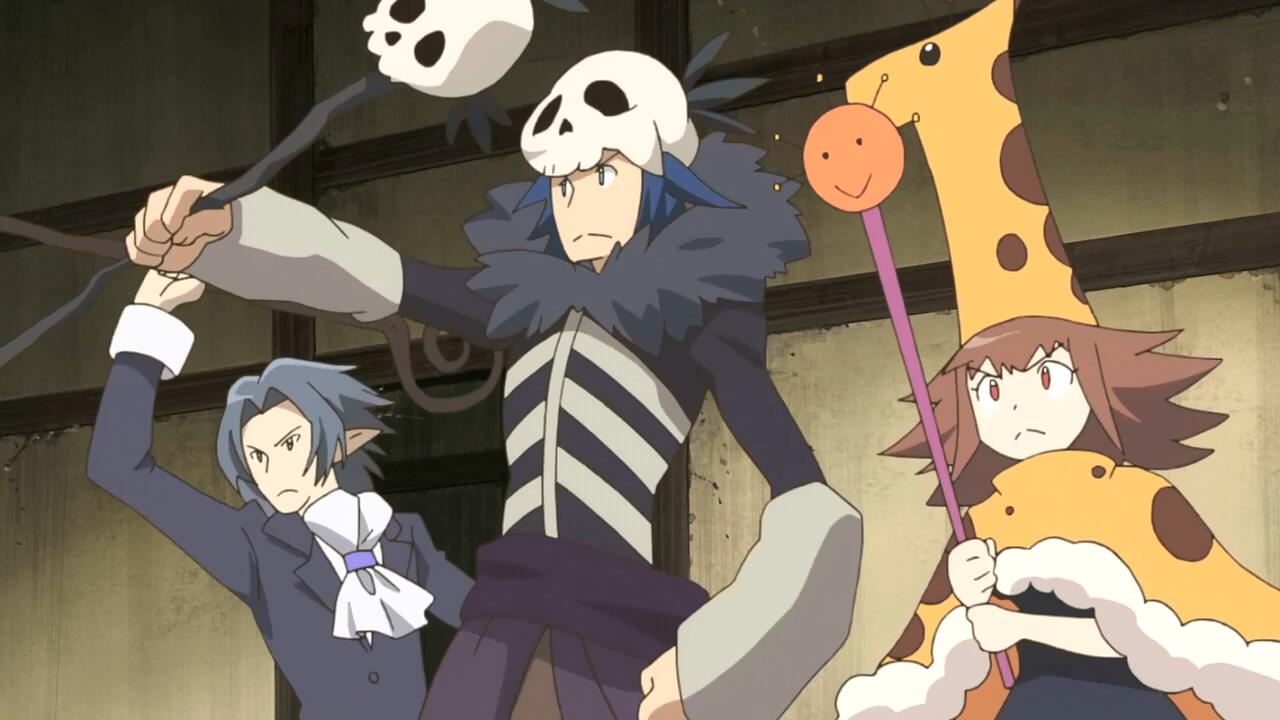
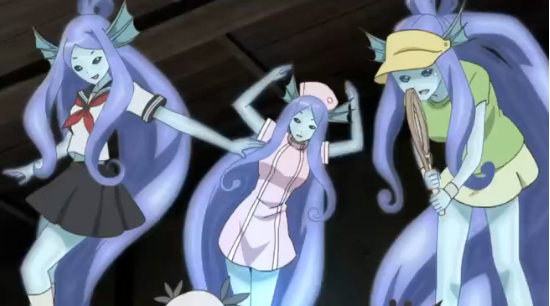
A team of Summoners and their Summons
Starting Stats: 1 STR 3 DEX 3 POW 4 INT 35 HP +5 HP Mod
Can Equip: [Staff] [Whip] [Light] [Magic Stone]
Unlike other games where Summons become extra NPCs for players to control and potentially break things like Action economy, in this game, there are generally two types of summons: Servant Summons and summons that aren't Servant Summons. Servant Summons are Skills used at the beginning of the round that generate a persistent effect for the caster as well as secondary effect at the beginning of each round when it's reactivated. There's no upkeep to them as well. Other summons are basically identical to other Skills and are generally treated as such. Summoners are another flexible class, with the capability of engaging in offense, healing or general support. In the series, they're supposedly able to play solo as their Summons can actually take hits for them and such. However, in the RPG, they have no such capability as of yet (it may be intended in the future as one Skill they have refer to summons with tags that the Summoner doesn'thave yet).
Starting Skills:
Ultimagica
Servant Combination - Once per scene, for 1 Hate and up to 3 Fate, the target gets [Weakness: (Fate Spent + Skill Rank) x2] until the end of the round. (Weakness, blah blah about statuses, persistent extra damage when hit).
Any one Skill with the [Servant Summon] tag. The Summoner currently has four skills to choose from that have this tag. Two are offensive, two are for healing. By default, only one Servant Summon skill can be active on a character at a time.
Class: Enchanter

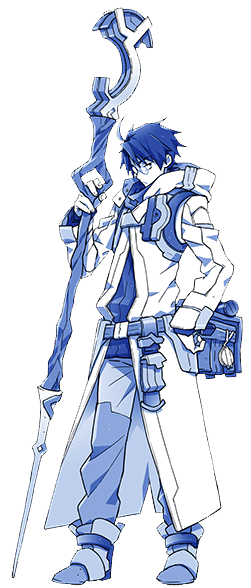
The main character of the source material and all around poopsocker
Starting Stats: 2 STR 2 DEX 2 POW 4 INT 35 HP +4 HP Mod
Can Equip: [Staff] [Whip] [Light] [Magic Stone]
The ultimate offensive Support caster. In the source material, Enchanters the least popular class in the game as they cannot solo have awful offensive and defensive capability. Where they shine, however, is with others who do engage in direct combat as their ability to support their efforts are unparalleled. the lead protagonist of the Log Horizon series is a top level Enchanter which, while potentially reeking of self insert, also provides contrast to most fantasy series whose lead protagonist would more resemble one of the Warrior classes. Unique to the Enchanter are Enchantement Skills which are essentially buffs cast at the beginning of each round. These can increase things like damage dealt or [Recovery].
Starting Skills:
Ultimagica
Infinity Force - Once per scene, before the target acts, reduce the Hate cost of all of their actions to 0. For 2 Fate, this can be used again if it was already used in the scene.
Any one skill with the [Enchantment] tag. All Enchantment skills cost 1 Hate to activate, cast at the beginning of each round and can only maintain up to two at a time.
Side note: Alternate classes
In addition to the classes listed above, the author had held a fan vote last year and added a bunch of classes unique to regional servers. Classes like the Samurai and Kannagi are unique to the Japanese server and their international counterparts are the Pirate and the Medium respectively. North America got one unique class in the Medicine Man, as an laternate for the Medium/Kannagi while Western Europe has the Paladin instead of the Samurai/Pirate, the Templar instead of the Cleric and the Exorcist instead the Medium/Kannagi. Scandanavia also has their own server with the Viking for the Samurai/Pirate and the Skald instead of the Bard. I imagine that server is pretty


Races
Like I mentioned above, there are 8 Races to choose from in the game. Each race gives a bonus of some sort to starting stats, HP and determine your starting Fate. Each Race also has their own set of Racial Skills that players can choose from when levelling up.
Race: Human
They get no picture because they're humans
Generic, boring Humans. They even get the boring Human stat flexibility thing. Yawn.
Starting Stats: +1 to any two Stats 8 HP 1 Fate
Race: Elf
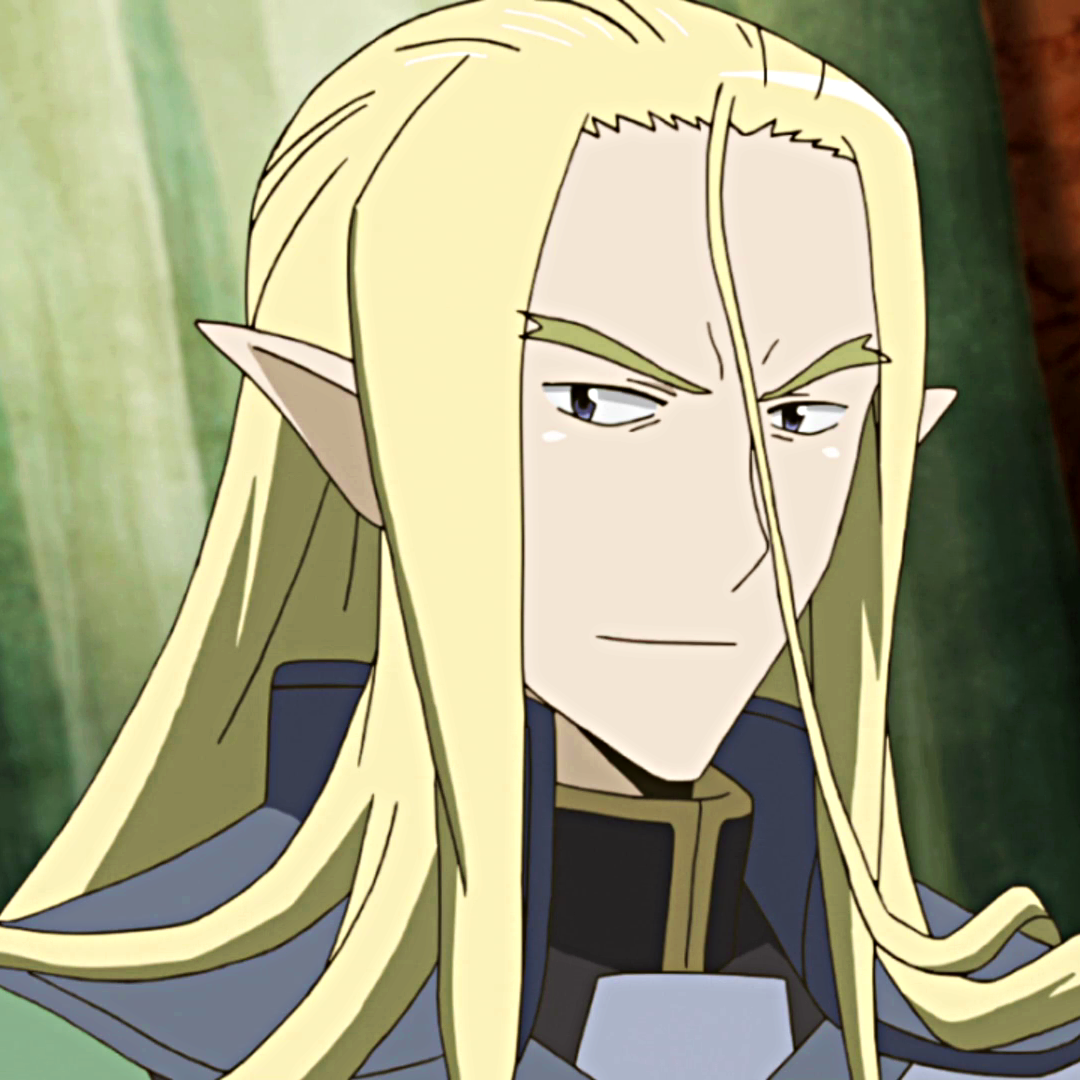
Comeplete with the requisite smug
They're Elves. The standard sort with the affinity of being dextrous and such. The character William Massachusetts is one (see the Weapon Master).
Starting Stats: 1 DEX 1 POW 8 HP 1 Fate
Race: Dwarf
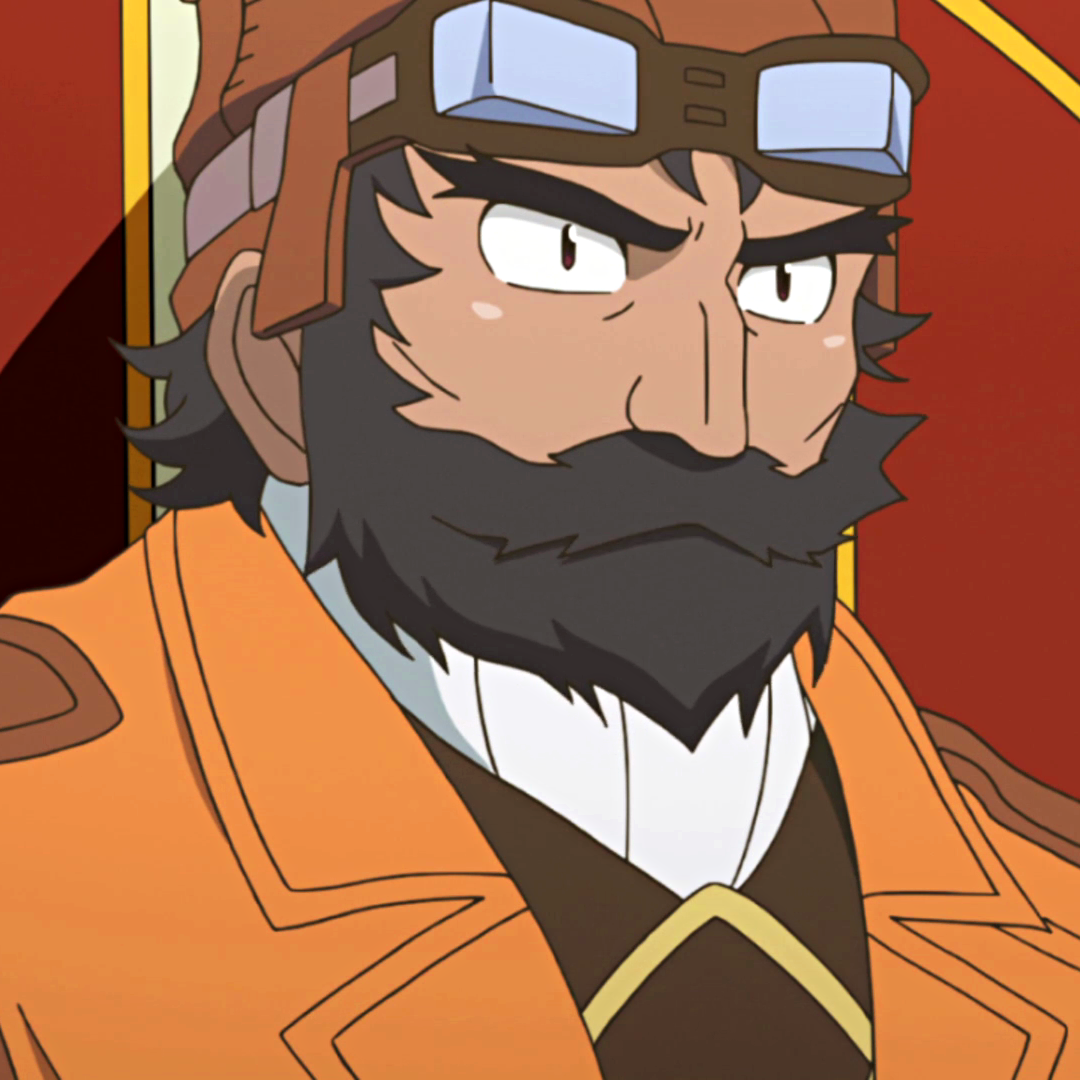
Complete with requisite beard
Dwarves. They're slightly shorter but sturdier than everyone else.
Starting Stats: 1 STR 1 POW 16 HP 0 Fate
Race: Half-Alv
They look exactly like humans except for a thing on mark on their tongue. Also known as the game devs being lazy fucks. In universe, Half-Alvs are the descendants of the mythical Alv race that had gone extinct due to an ancient war and had bred with Humans. They're good with ancient machines. The character Shiroe (see Enchanter) is one.
Starting Stats: 1 DEX 1 INT 8 HP 1 Fate
Race: Werecat
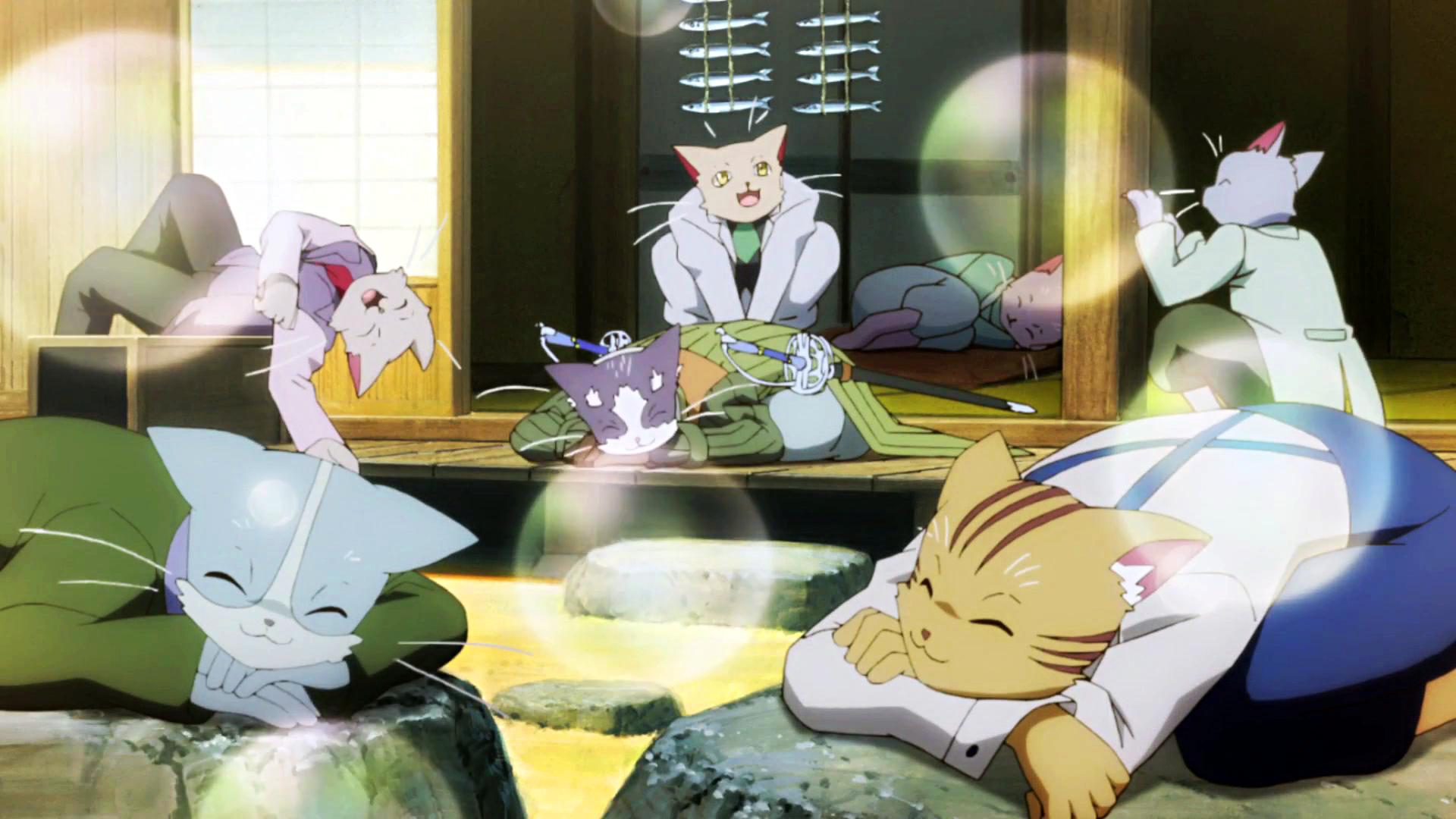
A group of Werecats in their natural environment
The furriest of the 8 Races. In the fiction, they, along the the next three classes were created by the Alv to combat the Demi-Humans. They're also the most agile of the races and lack tails. The character Nyanta (see the Swashbuckler) is one.
Starting Stats: 1 STR 1 DEX 8 HP 1 Fate
Race: Wolf Fang
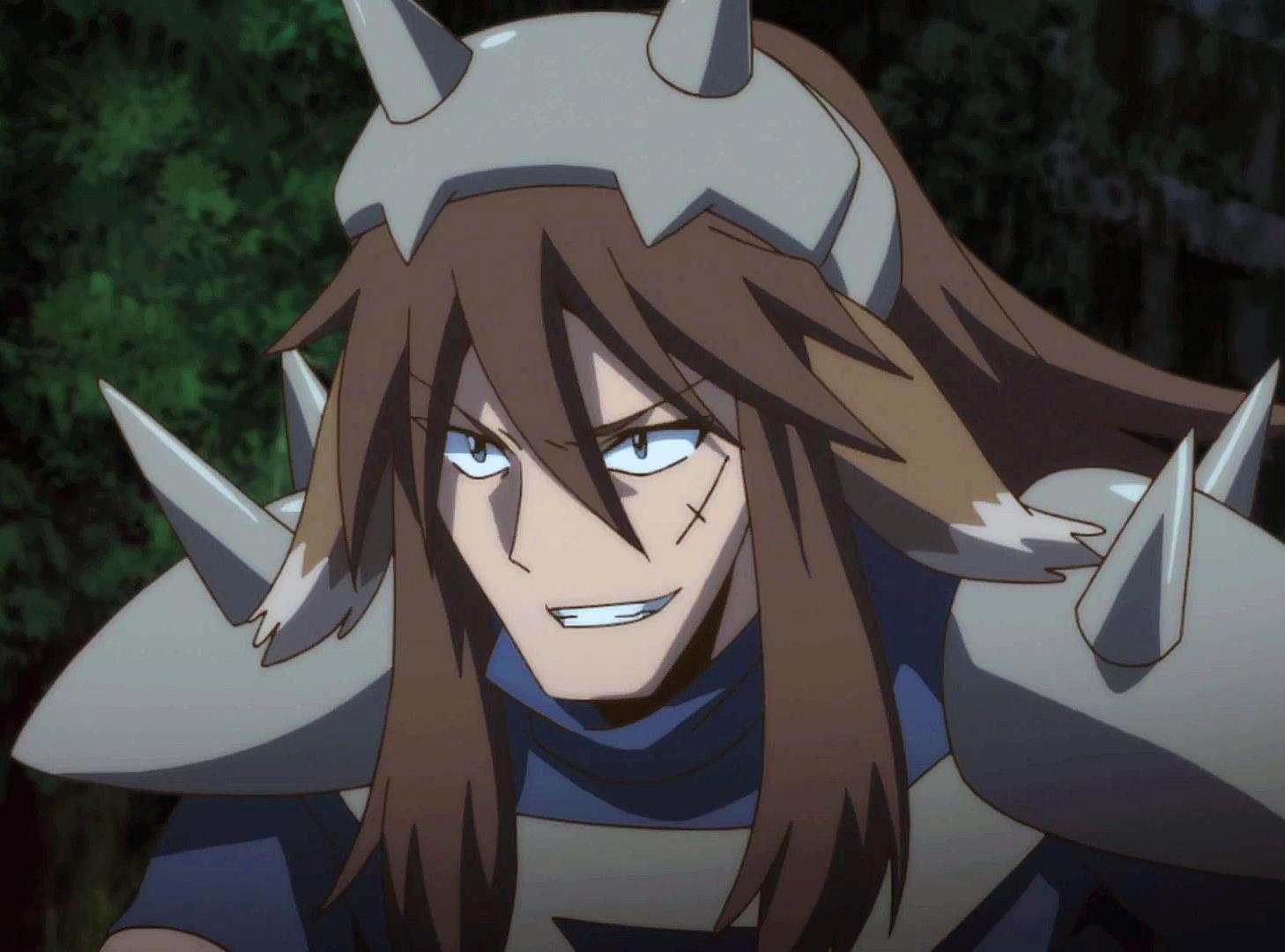
The beefiest race. They tend to have very bushy hair and can hide their ears under it.
Starting stats: 2 STR 16 HP 0 Fate
Race: Fox Tail
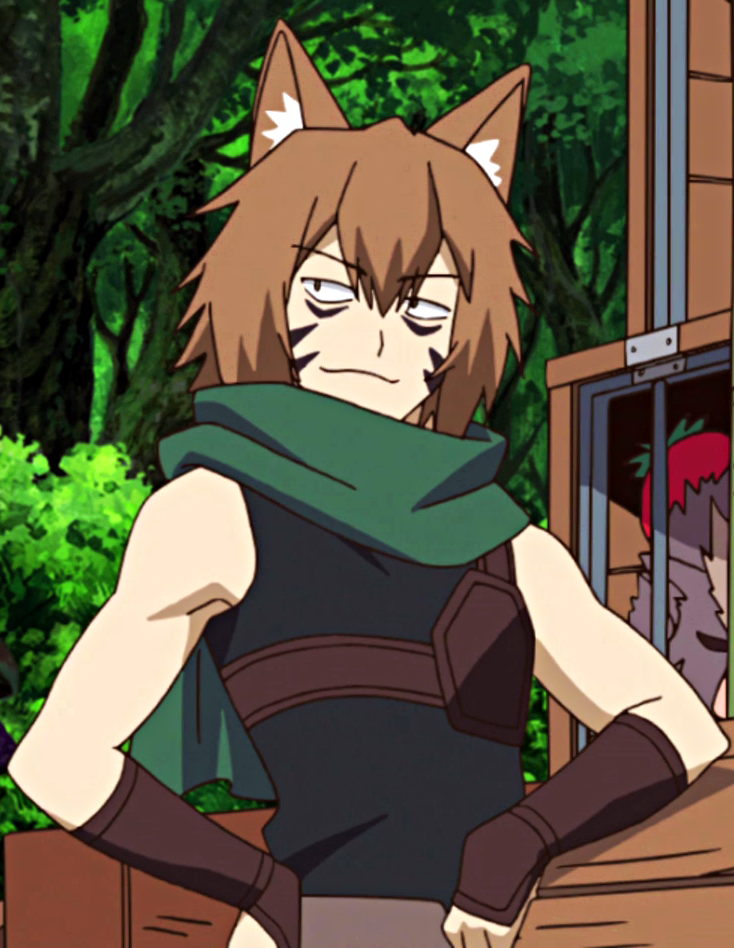
Probably the most unique race. In universe, Fox Tails have a racial triat that occurs every few levels called Skill Switching. The Fox Tail loses one of their Class skills in exchange for another's. It is exactly as random as it sounds, but I don't believe it ever pops up in the series. In the TRPG, they have a Racial skill that can be chosen that allows them to pick up a skill outside of their Archetype, Class or Race in exchange for losing 10 Max HP.
Starting stats: 1 POW 1 INT 8 HP 1 Fate
Race: Race of Ritual
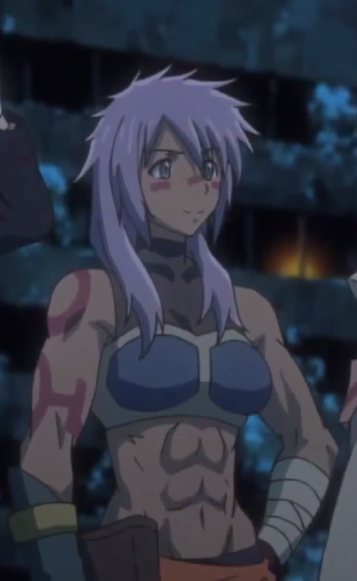
An atypical Race of Ritual
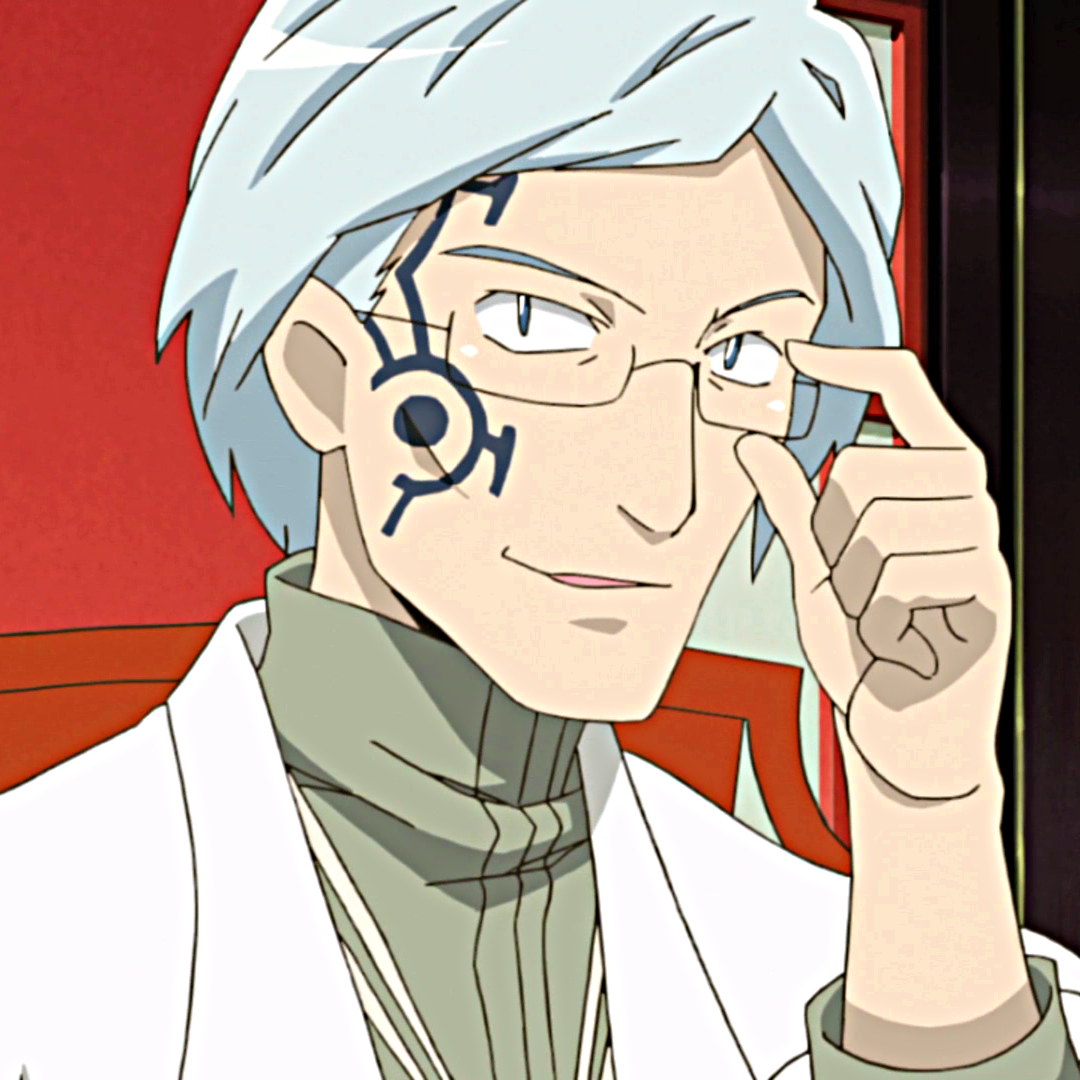
A more typical one
The squishiestand nerdiest of all of the races. They look nearly identical to Humans except of the tattoos adorning their body.
Starting stats: 2 INT 0 HP 2 Fate
Completing Character Generation
In addition to the stats gained fron the Race and Class, players get 5 bonus points that they can add to their Base stats up to a max of 7 before Skills.
Players now choose three additional Combat skills and one General skill from the various Skill lists that they have access to. The Skill Rank of Skills cannot be raised above the Player's Rank. Additionally, Players cannot gain more than two Skills with the Training Tag.
Characters start with 350 Gold, a Backpack, an Adventurer's Set and a Lunch Box. The gold may be spent as this time for equipment. Characters also start with one Connection. A Connection is a relationship to a PC or NPC of some sort and is mainly for plot hooks or getting a bonus of out certain skills.
Personal data is filled out, including Name, Gender, Guilding Creed (why the PC is an Adventurer), Level (the level in the Video game which has Zero effect on the game) and Starting Sub-Class. A Sub-class is mostly cosmetic but has effects with certain skills.
Sub-Classes include, but are not limited to: Acrobat, Apprentice, Arcanist, Armorer, Artisan, Blacksmith, Butler, Chindon'ya , Connoisseur, Cook, Counterfeiter, Demon Lord , Devotee, Doctor Duelist, Elder Maid, Explorer, Farmer, Food Fighter, Forager, Frontier Guard, Gambler, Gemsmith, Herbalist, Jeweler, Leatherworker, Maid, Mechanist, Miner, Nomad, Novelist, Painter, Scribe, Spellthief, Survivor, Tactician, Tailor, Trader, Woodworker
And that's character generation. Nothing too complex or crunchy here. Of course combat is where things get complex and the next post will elaborate on that.
Character Advancement
Of course, in conjunction with character generation, advancement should also be explained. When a character goes up in Rank (how specifically will be explained later, but it's generally once per session), they get a number of things.
First, they increase their HP by their HP Mod and each Base Stat goes up by 1 with all associated Attributes and Abilites Scores adjusting as needed. Each player also gets a number of skills. From Character Rank 2-10, players get two Combat Skills and one General Skill. At Character Rank 11+, they only get one Combat Skill and one General Skill. Each skill has its own cap and Skill Rank cannot go above Character Rank.
There's also no Max character Rank. The sky is the limit in this game, and various skills go up in effectiveness at certain Character Ranks. with the highest being CR 21 I believe.
And that's all it takes to "Level Up."
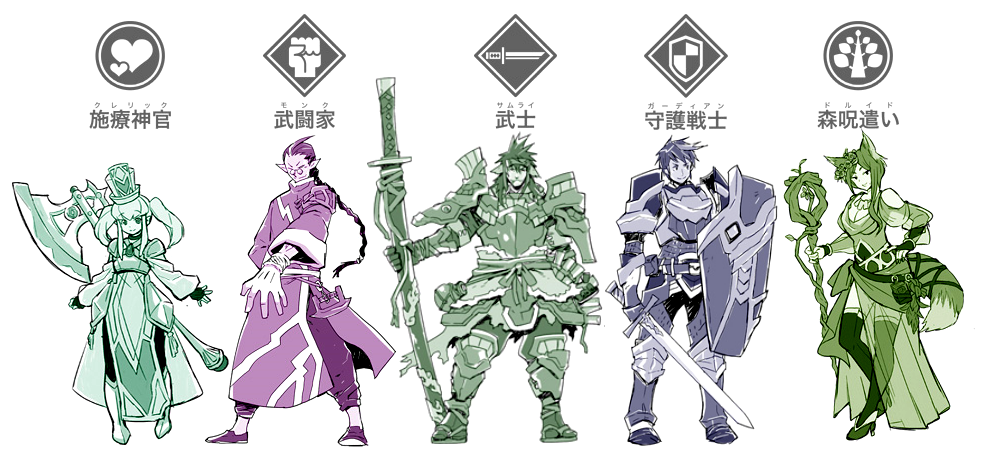
Picture: Characters created for the TRPG. From L to R - Cleric, Monk, Samurai, Guardian, Druid
If anyone has any character generation ideas, I'll take the first few and use them in an example of generation as well as other examples.
Edit: Also, important question: Should I do skills next or gameplay and combat next?
Character Rewards
Original SA post
Pre-post Edit: Any instances of Scenario or Session in this write-up or rules should be interchangeable as a given Scenario should be completed in one Session. I noticed this after writing the Session section and didn't feel like like doing a search and replace because

Character Rewards
Edit: Another thing I forgot to mention in Character Advancement: No Multiclassing. Ever. Once you've picked a Class, you're stuck with it. It makes sense in order to preserve balance, otherwise, without some elaborate hoop to jump through, there'd be a bevy of cherrypicking Skills through classes and the whole system kinda falls apart.
Log Tickets
At the end of each session, the GM will hand out Log Tickets to each player.
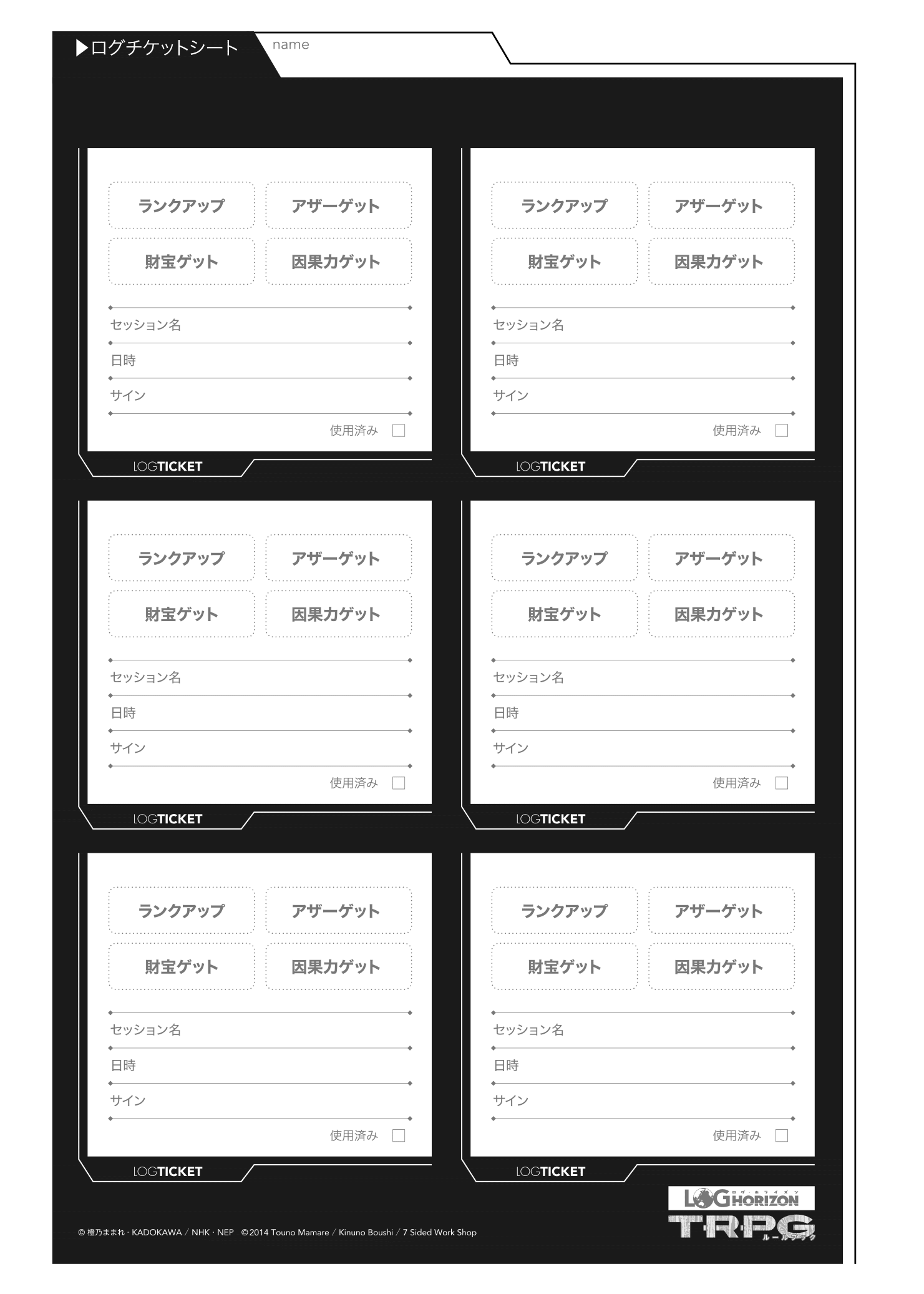
Here's a sheet of them. Instead of Experience points or whatever sort of tracking currency, players recieve these that they can use on their Character. The rules make a note that Log Tickets are given to players and spent on characters and not to the characters themselves. This is due to situations where players rotate in and out or the person sitting in the GM's seat rotates amongst the group.
There are four different types of Log Tickets: Character Rank Up, Fate Point Get, Treasure Get, and Other Get.
The Character Rank Up ticket is used to increase the rank of a character.
The Fate Point Get ticket is used during Pre-Play to increase a character's Fate Points by 1 for that session.
Treasure Get is used to acquire either one normal item of their CR (character rank) or lower, two normal items with the [Consumable] tag of their CR or lower or a roll on the Treasure Table with a +10 to it and no other boosts from Skills or other items.
Other Get, finally, is how one acquires new Connections, Unions (the organizational version of a Connection) and Sub-Classes. Note: There are no limits to how many Sub-Classes one can have, but only one may be active during a session at a given time and is chosen during Pre-Play
At the end of each session, Log Tickets are awarded to each player and the GM is the GM changes. The suggested rewards are
For Players: 1 Character Rank Up Ticket and 1 Ticket of any type per event.
For GMs: 1 Character Rank Up Ticket, a number of Treasure Get Tickets equal to the number of players and 2 Tickets of any type per event.
The reason for the double helping of Treasure Get Tickets is due to missing out on getting Prizes during the session. Nothing really indiciates what an event is or what differentiates it from a Scene or if they're the same thing and it's a translator fuckup. They also might be two different things and it's poorly explained.
Treasure
Whenever players are rewarded, they are to get
Flow of Play
Japanese Tabletop RPGs being what they are, they tend to have their own brand of ideas of how the flow of a session should work that's a bit more confined compared to the more lassiez faire notions of the West. To be fair, however, how it's described is a generally more codified version of how a session is to be run.
Session Flow
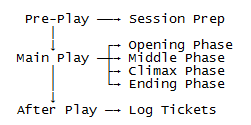
Courtesy of the .txt file that has all of the information on the game (since apparently there isn't a fan who can turn it into a decent looking PDF). I tried putting it in as is, but it wont format here so enjoy the screen grabs
The chart above is how the general flow of a session operates.
Pre-Play
This where all the stuff that's done before the session begins is supposed to occur like when the pizza for the game is ordered or when the GM scribbles down what's actually supposed to happen in the session since he or she hadn't done it beforehand. Also, Skills with the timing Pre-Play are used here.
Main Play
The actual session. This part is divided up into multiple phases, each with multiple Scenes. A Scene is essentially an encounter or sub-encounter where things actually are done. At the end of each Phase, all players recover a Fate Point
Opening Phase
This is when the problem of the week/session is introduced with usually only one Scene occurring (as per the .txt which is probably as per the book). Once players have bitten onto a plot hook and started on it, they can move onto the next phase.
Middle Phase
This phase composes the largest part of the session and involves the Players actually doing work to solve what ever issue was presneted to them like killing 20 Brown Warrior Beetles or delivering a parcel to the generic farmer in the next town over. "They should be presented with challenges, trials, and possibly enemies to defeat." Possibly enemies. Once players are at close to finishing their goal, they enter the next phase.
Climax Phase
This is where the Boss battle takes place or whatever final encounter is appropriate.
Ending Phase
This is where everything wraps up and the heros collect their sweet loot that they picked up while running off the rails or the fifth time in the session. There are generally no encounters in this phase unless everyone wants to fight for their share of the loot ala Red Dragon Inn.
Other notes on Scenes
At the end of each Scene, a few things happen.
-
Any Bad Statuses affecting a player are removed
-
Characters that are Adventurers (generally players and some NPCs) who are [Incapacitated] at the end of the scene recover to full health.
-
Players who are enemies or People of the Land (the term for the original natives of the game world) become [Dead] and die unless the GM says otherwise
-
Adventurer characters who are [Dead] are revived with the status [Fatigue: (Max HP - 1)] i.e. They revive with a Max HP of 1 until it is cured.
- Interludes occur between Scenes and any Skill with a timing of Interlude can be used
As mentioned in previous posts, in the series Adventurers (people who were sucked into the game) can't really die. Upon death and subsequently popping into a pile of XP and loot, Adventurers revive at the nearest Cathedral or respawn point missing some stuff and some XP. This XP, however, is also their memories and once it's lost it can't be regained as it was. In this game, there's no mechanical way to simulate it and players that are revived either rejoin the party wherever they are at the next scene or wherever the GM thinks it makes sense. It's probably easier that way.
After Play
This is where general session housekeeping tasks are done like filling players back to full health and Fate Points, selling unwanted loot and treasure and spending their "Log Tickets."
Round Progression
This generally occurs during combat or any other time sensitive tasks like defusing a warhead or running through a series of traps. Have another flowchart.
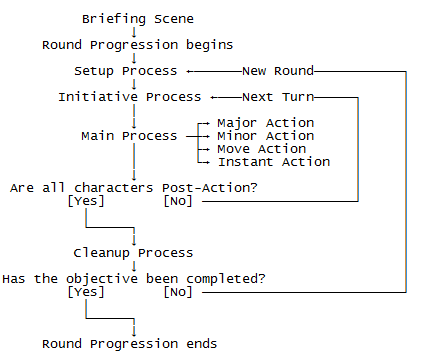
Briefing Scene
This is the part that happens just before a fight where the GM tells the players any observable information about the enemies they will encounter in the scene
In the event of a surprise round (by either the players or the enemy), there is no Briefing Scene and anyone cause surprised are made [Dazed] and [Post-Action].
Side note: Scouting
Certain skills are Scouting skills and have the [Scouting] tag. They allow players to get extra info on the enemies they might face (enemies include traps). These skills also have a special effect if the player Fumbles the roll which is that the enemy notices them. The mechanical result is up to the GM and can include calling for reinforcements, retreating to a better position, or anything that makes it worse for the players like giving them all +3 Hate at the start of the fight.
Setup
This is the beginning of the combat round, where all characters are set to [Pre-Action] status. This is also where Skills with the [Timing: Setup] can be used.
Initiative
This is when the person to go next is chosen and Skills with [Timing: Initiative] can be used. If there was another flowchart to determine who goes next in initiative, I'd have it here. Unfortunately, there isn't and I'm not making one.
How it works: Highest initiative [Pre-Action] character not on Standby goes. If there are none, lowest initiative [Pre-Action] charcter on Standby goes. If there are ties, it defaults to the PCs. Between PCs, they decide or the GM does if they cannot. Between NPCs, GM decides.
Standby
Before entering the Main Process, a character can elect to go on Standby. It's akin to holding an action and must be done before performing an action in the Main Process. Also they cannot go into Standby twice in a round.
Main Process
("Process" is such a strange word to use and I'm 90% certain it's the translator and not the source that has it as such. I could definitely be wrong given the Japanese handle on English.) The actual action part of a turn. Characters are allowed one each of a Major, Minor, Move and Instant Action (think Standard, Swift or Minor, Move and Free). They can be taken in any order and Instant Actions can be taken at any point during the Main Process. Once a character is done with the Actions, they are changed from [Pre-Action] to [Post-Action] and status effects like [Staggered] or [Dazed] are removed.
Cleanup Process
Effects like [Regen] or [Decay] take place during this part with healing going before damage. Any Skill with [Timing: Cleanup] is used here and any effects that last for one round end here.
Combat
And here it is, the section where a majority of actions and things a player can do take place.
Squares and Movement
Every measurement in this game is done via Squares. 1 Square is 5 square meters. (Assuming they mean an area of 5m^2, this approximates to Squares that are approximately 5ft. x 5ft. actually which screams D&D to me.) Unlike that game, however, you can fit any number of characters into a Square as the GM deems reasonable so there's nothing wrong with situations where the party Tank is literally on top of the Mage in order to protect them though it doesn't really stop targeting. Line of sight rules aren't really explained in much depth beyond Props that are [Impassible], like Walls, block it. There's no mention of Center-to-Center or Corner-to-Corner or Point-to-Point rules, so I'm assuming it's up to the GM's discretion as to if something is in Line of Sight. Distances and Movement are traced orthogonally. No diagonals.
Three types of movement: [Normal Move], [Safe Move] and [Teleport]. [Normal Move] is affected by [Hinder], enemies and terrain. [Safe Move] is affected only by terrain. [Teleport] is affected by none and only requires landing in a valid square. There's also forced movement that characters can force on others. They follow the movement rules of the type of movement occurring such as [Safe Move (Forced)] being immune to [Hinder].
Instead of Attacks of Opportunity, there's [Hinder]. If a character in the same square as you would attempt a [Normal Move], you can declare a [Hinder] and their movement immediately end. No Tumble check, no nothing. Should've used a [Safe Move].
Attacking and Defending
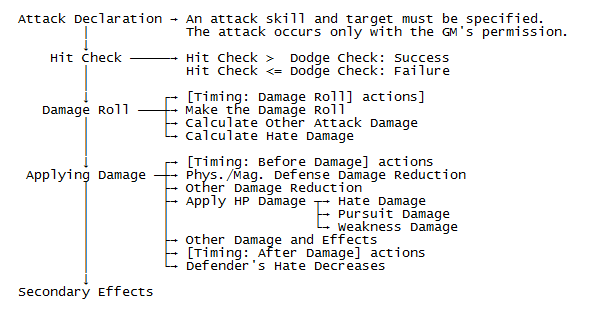
Another flowchart for how Attacking works.
There are three types of attacks: [Weapon Attacks], [Magic Attacks], and [Special Attacks]. [Weapon Attacks] are done via a weapon and are either a [Melee Attack] or a [Ranged Attack]. [Magic Attacks] are done via magic (obviously). [Special Attacks] are done via songs, mechanisms or other things.
Once you have made an attack and
After the attack roll is the Damage Roll. There's four types of damages: Physical, Magical, Penetrating and Direct. Physical damage is generally done via the environment or weapons and Magical damage is done by magic. Penetrating damage is special and ignores [Physical Defense] and [Magical Defense], however, it is still resisted by the [Cancel] effect. Direct damage is even better than Penetrating as it ignores [Cancel] as well and cannot be reacted to. The only thing that can mitigate it is [Barrier]. There's a chart provided in the .txt, but I'll spare you that.
The flow chart summarizes damage application for the most part. Once damage is calculated, Physical Defense or Magical Defense reduce damage by their ratings and then other sources like [Cancel] and [Barrier] apply their effects. If any damage goes though, it's deducted from the defender's HP. After, other damage effects like [Hate], [Pursuit] or [Weakness] apply in any order. Once damage is done, any added status effects are applied if the attack does so. Any post-damage healing comes after and finally secondary attacks from the initial one occurs.
Simple right?
Skills
Skills are the meat and potatoes of what combat actions a PC can take and generally provide the more unique advancements to a class. A more comprehensive listing will be done later since a significant number of skills (like the starting ones) don't make as much sense outside of the context of the flow of play and combat rules.
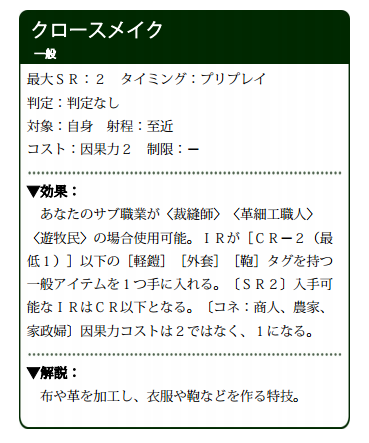
Extracted from supplementary material online, this is what a typical Skill box looks like. The fan translations have put them all into Excel spreadsheets since its easier to make the boxes in there. The skill boxes there more resemble this:
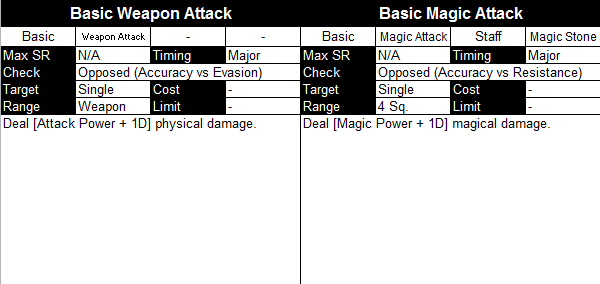
Skills actually come in three types: Basic (which everyone has), General and Combat. If it's in that space and isn't "Basic," "General," or "Combat," it's just another Tag.
Max SR is the highest rank a Skill can go to. This ranges from 1 to 5.
Timing is when a skill can be used. Most of the time it refers to the phase it's supposed to work in. It's pretty obvious.
Check Type says whether its opposed, versus a difficulty, auto succeeds, has no check or is in the text.
Target : Self is self-explanitory while Single/some value is as well. Area, Wide or Line are a bit more particular and all can have P or A after them with the latter two also having a value indicating range. Area (P) indicates that any number of valid targets in the targeted square are affected while Wide 2 (A) means that all valid targets 2 squares away are affected. Line indicates a straight line in any of the four directions.
Range is also easy to figure. Close indicates the same square, Weapon is based on the Weapon. Otherwise it should explain.
Cost is generally gaining Hate or spending Fate points. If (Party) is specified, then the user and their party members must pay the cost. If (Allies) is specified, then all allies of the user must pay, but the user doesn't have to.
Activation is how often it can be used. Things that are n/Scenario can be thought of as Dailies while n/Scene can be thought of as Encounter powers.
The description text is mostly straightforward and is fairly clear for a translation, so kudos to them.
Other Things
So this is a pile of stuff that does't really fit into the above and constitute the GMing and Reference sections
Exhaustion
Since HP is not at all a way to track party fatigue over a session, Log Horizon has
One thing that the game's provided Scenario has is The Exhaustion Counter which is meant for things like dungeon crawls and the like. Every round that progresses, add +1 to the counter and whenever the party would roll, they would add that modifier onto the roll.
Items and Equipment
Equipment
Each item has a rank and a number of tags on it. The rank determines what CR a character may use it at. Thus, a rank 3 item is unusable by a rank 1 character without a Skill that allows them otherwise. Tags indicate the item's type and/or where it equips to. Anything with the [One Handed] or [Two Handed] tags go to the hands while anything with the [Accessory] tag goes to the Accessory slot for example. Every player has a limited number of equipment slots for their character.
They have two hand slots (for weapons or shields), an armor slot, a bag slot, three accessory slots for things like helmets or cloaks or extra bags and so forth, and two inventory slots to carry anything unequipped. Some equips have tags that allow them to be put in multiple spots. You can choose any slot it's legally able to be put into for use.
Changing or trading equipment is a Skill (actually two skills, one for reequipping and the other for trading). Both are Minor Actions
Notable Equipment tags
Most tags are fairly obvious like [Helm] being helmets or [Blade] indicating swords.
A few do need explanation though.
-
[Consumable] indicates a single use item. A number of them have no effect on characters of a certain CR or higher
-
[Food] is for recovering from Fatigue. While each food item takes a single Inventory slot, there is the Failed Cuisine which all fits in a single slot, but is the most ineffective per unit. Other food items have a range of Area (like the Pizza) to imply that the entire party is taking a share
-
[Medicine] includes all manner of potions and salves.
- [Bag], a tag for items that go into your Bag slot or any indicated slot and increase your inventory slots
Arms and Armaments
Weapons, armor and accessories all can modify your stats. Armors and shields increase your [Physical Defense] and [Magic Defense]. This does mean that having a [Sheild] in each hand can maximize your defenses. However, since they are not weapons, they don't add to your [Attack Rating] and as a result you're considered Unarmed. The [Attack Rating] and [Magic Rating] for being unarmed is equal to your STR and INT respectively. There are very few reasons to ever be willingly Unarmed. Most of those reasons are for Skills that require it. Weapons follow the same rules somewhat except that only one weapon's [Attack Rating] can be used at a time in an attack unless a Skill says otherwise.
Magic Items
If it isn't a mundane item, it's Magic. There are two basic types of Magic Items: Prefixed and Named. Prefixed items are the typical D&D weapons of Burning Keen Longsword of Death or what have you. Named items are "unique" items with a special name and are generally better than an equivalent Prefixed or Mundane counterpart. All Magic Items have a grade and are akin to their rarity/potency (the .txt lists item colors in an MMO as an equivalent). The grade ranges from [M1] to [M7]. Each Magic Item also has a recipie involved in making it. Named items have their recipie listed with their description including a specific [Core Material] which are only obtained through the Treasure tables or drops from certain enemies. This is in addition to other base items, money and [Magic Catalysts]. Prefixed items, on the other hand, need only a single base item, some [Magic Catalysts], and some money.
Creating a Prefixed item is a bit more complex and I'll let the .txt do the talking here:
quote:
Step 1: Choose a Prefix. Prefixes can be found in the Item List.
Take note that certain Prefixes may only apply to certain item Tags. These must be obeyed.
Step 2: Choose a Base Item to apply the Prefix to.
Step 3: Name the new Prefixed Item.
Step 4: Add the [Mn] (Magic Grade) tag.
Step 5: Determine quality and quantity of Magic Catalysts.
The grade of the Magic Catalyst is equivalent to the Item Rank of the base item. For instance, enchanting Ring Mail, a rank 1 [Heavy Armor], requires [Magic Catalyst 1]. The number of required Magic Catalysts depends on the Magic Grade tag, determined by the chosen Prefix. For instance, applying the Hardened Prefix to the Ring Mail would be [M2], therefore, you would require [Magic Catalyst 1] x2.
Step 6: Pay the cost
The Construction cost is equal to the amount you would have paid for the Magic Catalysts. For instance, two Magic Catalyst 1's would cost 30G total, so the Construction cost would be 30G.
The items spreadsheet has a listing for all of the costs.
Enemies and Props
Props
Everything that is not a character, an enemy, or an item is classified as a Prop. From the ceiling to the floor, if it's part of the terrain or not owned by anyone relevant, it's probably a Prop. This also includes certain traps or impediments to progression like locks or traps. Props can also have difficulties attached to them related to Analyze, Percption or Disable
Enemies
Enemies, like everything else in this game have Tags and their own stat block and Rank. When setting up monsters, a CR1 Enemy = a CR1 player and it goes up accordingly. The book doesn't list how many CR1 Enemies are equivalent for a CR 2 Player or something similar however.
There are three relevant tags for enemies: [Mob], [Gimmick] and [Boss]. As explained before, [Mob] enemies are mooks and are weaker than PCs. Two [Mob] enemies are equivalent to an equally ranked player. [Gimmicks] have a similar power level, but more resemble traps or mechanical devices that just run on the Enemy rules. [Boss] enemies are the reverse and a single [Boss] is worth 3 or 4 PC of the same rank. Bosses also have Fate Points that can be spent to do special attacks or improve their rolls like PCs do.
Final

After all of this, I'm not sure this is a good system to really run anything in. There are elements of a good system hiding inside it. I like the codifying of skills and tags to categorize everything. The classes are relatively well thought out and all do what they're meant to do. The rules are clear and clean and generally unambiguous, though that may be due to the translators, so kudos to them. Introducing the ability for there to be multiple occupants in a single space is quite revolutionary for a game like this and Hate is very interesting as a method to punish/reward GM attack focusing.
For problems, I feel there are more of. The lack of concrete scaling is a bit of an annoyance. The amount of scaling via character rank is somewhat slow since it takes three levels for a given attribute to increase without getting equipment or a Skill to increase it. Beyond that, the numbers on skills don't every change except at prescribed increments (many of them at CR 11 or 21 if characters ever reach that far). Just as the Classes are focused in what they do, they don't leave a lot of room to do things outside of their proscribed roles. Guardians are only ever going to really play Tank while Enchanters are really only ever going to play support. Reading the rules doesn't imply much emphasis on things outside of Combat. Not necessarily dungeon crawling itself, but it runs into some of the problems that D&D has where the complexity of systems related to combat vastly eclipse those systems not related to combat. Things like Connections, Sub-Classes and Unions are generally fluff and can be completely ignored without anything in the system being lost. The highly ordered nature of how a session should progress is also irksome, and that's more a Japanese game thing than a problem specific to this game (it's what makes me somewhat averse to Double Cross even though the Powers and concepts are interesting). There's a chargen minigame since coming in with a concept is all well and good, but since there are so many options already available, it's a bit paralyzing when making a character unless there's a very firm idea of what they wish to do with that character.
The system is probably more than inspired by 4th Edition D&D than any other edition and it's definitely a lot better than some other systems I've read up on. Unfortunately, the game isn't to my tastes. I get D&D flashbacks with this game. I haven't gotten into any real analysis over the game. This has more been a cursory inspection. I've looked over the body work, but I haven't actually taken it apart or turned it (
 ) on so things like combat math may still be looked at. There's definitely the possibility of Rocket Tag shenanigans occurring since PC and enemy damage seems quite high while the difficult to hit each other is relatively low. However, this may or may not actually be the case.
) on so things like combat math may still be looked at. There's definitely the possibility of Rocket Tag shenanigans occurring since PC and enemy damage seems quite high while the difficult to hit each other is relatively low. However, this may or may not actually be the case.
I hope this was an entertaining read for those who read my first attempt at an F&F. Writing it in Notepad makes these posts feel a lot bigger than they actually turn out which bugs me a little since it influences where I put line breaks. I'm actually kinda sick of looking at this system. Maybe it's because I've binged on every facet of this for the past few days writing up this F&F or maybe it's because I'm just bored of looking at Excel Spreadsheets and .txt files (including where I'm writing these before posting) as opposed to an actual PDF or physical book. There's some stuff I left out like the Monster Data or status effect explanations, but much of that is reference material. If people want to ask me questions about things in the system that is unclear or unexplained or just curious about, I'm welcome to field them to the best of my abilities.
The last things I'm posting that I'm in the middle of preparing is the Character example. The other thing I'm willing to post is a lineup and review of the Skills, but only if people think it would be interesting to dump a list of about 500 skills (many of which are very similar due to how it's written so it's likely a lot less than that in actuality) and their descriptions or just do an overview/summary. Alternatively, someone else could take up the task or I could consult with them. I would like to (re)do Dungeons: the Dragoning one day since it never finished and there's a certain novelty to it that fascinates me. I also might like to give Pokemon Tabletop United a chance since the last time I saw it, it was still Pokemon Tabletop Adventures and a d20 system.
In any case, that's the Log Horizon TRPG. The link to the largest repository of translated content for the RPG is here: http://lh.oksub.me/wiki/Log_Horizon_TRPG
Sample character generation
Original SA postPardon the interruption on the "What the fuck is wrong with Brucato?" chat, but here's the last bit on the Log Horizon TRPG.

With only Cat people to shame itself in furry appeal.
Sample character generation
For those that are curious, here's what the official cahracter sheet looks like
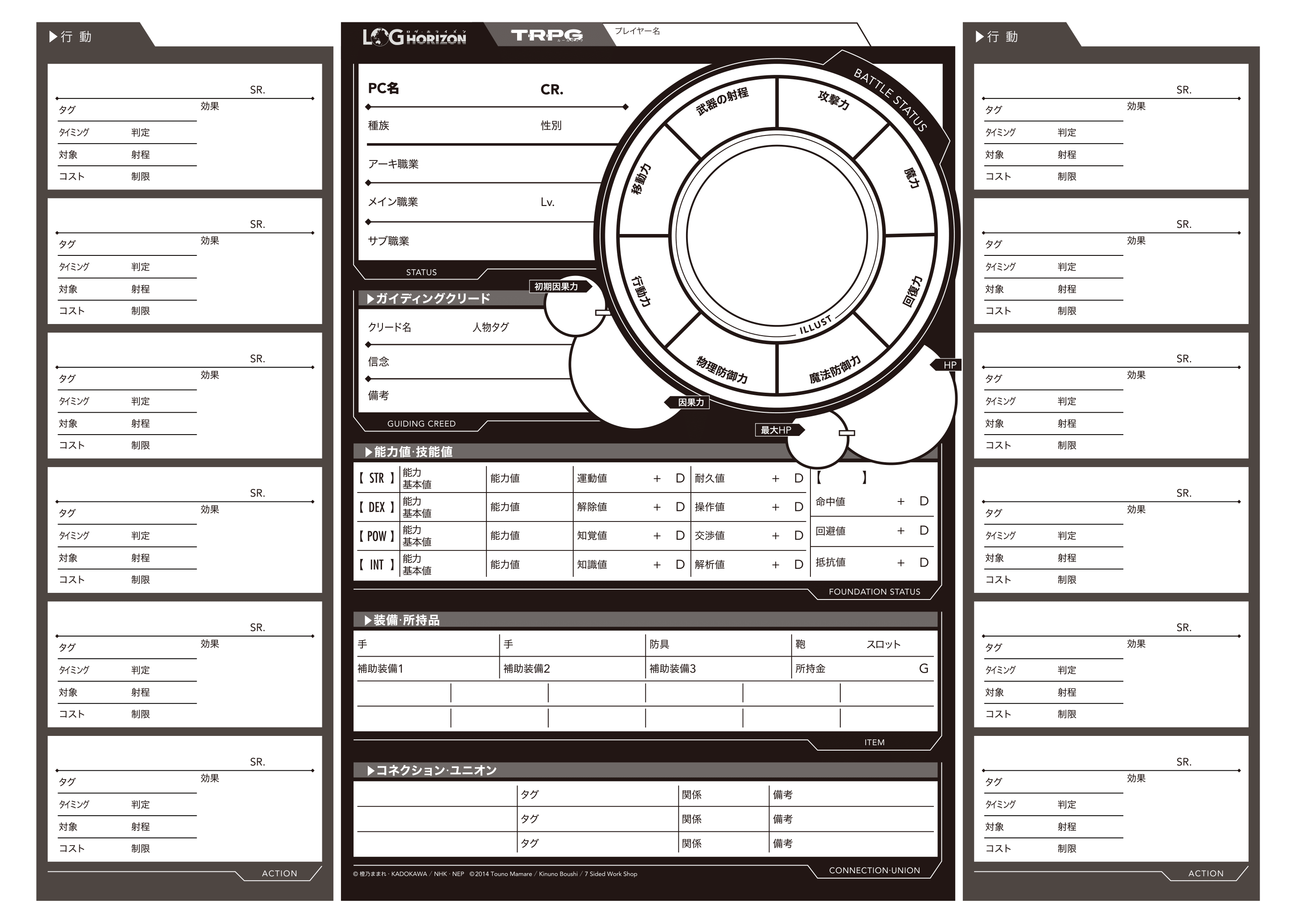
Somebody who can into Moonrunes can probably translate all of that stuff, or it can probably be inferred from the pregen sheets already up.
 on my end in doing that that though and the amount of stuff to keep track of isn't a lot outside of skills.
on my end in doing that that though and the amount of stuff to keep track of isn't a lot outside of skills.
Doresh posted:
No I'm reminded of these Pathfinder discussions that basically amount to how dual shield wielders make for the best sword-n-boarders.
Oh well, let's make a Fox Tail Guardian that is also an Elder Maid
Unfortunately, the only offensive Dual Shield wielders in this game are Clerics (filthy casters getting all the fun) and there's really no way around it beyond Changing Equipment all the time (it takes a Minor action to do so). Also, it's not even possible to really use the shield as a weapon by RAW until Rank 3 with the Skill Clerics get. Everything's written fairly clearly in this game though, so making up a skill shouldn't be too hard. (Balancing it might be difficult though). Apologies to the poster in ADTRW who also requested a character, but I don't feel like making another character as of this moment unless an actual game of this is ran or other circumstances call for it.
So Fox Tail Guardian, Sub-Class Elder Maid. I honestly have no idea what Elder Maid is supposed to be other than something referenced on one of the skills. The source material also has a few dozen other skills I may have not listed while others were probably lost in translation. But away we go!
Base Stats
First we'll genreate their base Stats from their Race and Class. Since they're a Guardian, we should boost their STR as high as it can go (7) and then put the remaining two wherever.
STR 4+0+3=7 -> 2
DEX 2+0+1=3 -> 1
POW 1+1+0=2 -> 0
INT 3+1+1=5 -> 1
HP 50+8=58
Fate = 1
As a note, it's obvious, I could actually have a Stat lineup of 2,1,1,1, but I didn't. Why? No reason really. It does change when a Stat goes up though if that's at all important. The way I have it now means that at Rank 2, they'll have a lineup of 2,1,1,2 as opposed remaining at 2,1,1,1. At rank 3, they're even so where the spare 5 base stat points are allocated doesn't actually make as much difference in the long run compared to picking up gear or Skills that boost Attributes associated with them.
Skills
Before we get to our final stats, we can pick up Skills. Since she's a Guardian and a Maid, her duty should be to protect and server her master, so we should pick up skills to reflect that. Each new character starts with three Combat Skills and one General skill
The skills we'll pick up are:
-
Covering - A Warrior skill. For a number of times per round equal to Covering's SR (Skill Rank), the user can take the damage and effects of an attack for an ally in the same square as them.
-
Tank Descent - Another Warrior skill. This one, as a Move Action, has you make a [Normal Move] in your speed spaces. Along with it though, you can take a willing target and have them make a [Safe Move] to your square. Basically, it's like you're carrying them to safety. This can only be used SR per Scene, but it doesn't count if you're doing it with Extras (unnamed NPCs). Doing this as a Minor Action lets you increase the distance by +1 Square.
-
Standout - A Guardian skill. SR/Scene, during initiative, pick an ally with Hate Top. Your Hate is now that +1
- Weapon Bash - A Common Skill. Get 2 Hate, make a [Weapon Attack] and deal [Attack Power + (SR+3)D] damage. Crits increase the damage by +2D
In a previous iteration of this build, I chose the Fox Tail Skill Substitute Tail which allows access to a General Skill that the character couldn't normally get such as a Racial Skill belonging to another race. In exchange, the character's max HP is reduced by 10. In the long run, this is a pretty good exchange, particularly for Warrior classes since it's little more than a Rank's worth of HP lost for a Skill that should more than compensate for it. I did this iteration instead since it seemed like a more realistic build.

Gear
Starting characters get 350g to spend on stuff to start. No rules listed for starting at a higher Rank. We'll need armor, a weapon, a shield and maybe something else depending on what's leftover. Since our starting character is Rank 1, they only have access to Rank 1 items. Each race has a Skill that allows them to use or equip items of a rank 2 higher than their current. For referrence, the Fox Tail's Skill is for [Light Armor], [Boot]s, and [Cloak]s so it's not very useful for us. The Dwarf has a good onefor Guardians since theirs is for [Heavy Armor], [Medium Armor], and [Shield]s. By Rank 9, this skill is worthless though since there's no listed items above Rank 9. Making an item that follows the scaling is easy enough though, but I doubt the writers of this system care enough to write for those ranks.
-
Ring Mail - [Heavy Armor], 7 PDEF, 2 MDEF, -2 Initiative, 130g
-
Buckler - [One-Handed], [Shield], 3 PDEF, 2 MDEF, 50g
-
Short Spear - [One-handed], [Spear], 3 PATK, +1 Initiative, 60g
-
Iron Helm - [Accessory], [Helm], 2 PDEF, 60g
-
Healing Potion I - [Consumable], [Medicine], [Rare], Timing: Minor, The target regains 25 HP, 40g
- Favorite Sandwich - [Consumable], [Food], [Preparation], The target's [Fatigue] rating decreases by 5, 10g
-
Backpack - [Bag], +5 Inventory slots
-
Adventurer's set - "Contains: chalk, flint, writing implement, spade, hammer & chisel, ten meters of rope."
- Favorite Sandwich - as above
Ability Scores and Attributes
-
Athletics: 2(STR)
-
Endurance: 2(STR)
-
Disable: 1(DEX)
-
Operate: 1(DEX)
-
Perception: 0(POW)
-
Negotiation: 0(POW)
-
Knowledge: 1(INT)
-
Analyze: 1(INT)
-
Accuracy: 2(Highest = STR)+2(Battle Master skill) = 4
-
Evasion: 1(DEX)
-
Resistance: 0(POW)
-
Max HP: 58
-
Starting Fate: 1
-
Attack: 3(Spear)
-
Magic: 1 (using unarmed Magic)
-
Recovery: 0
-
Physical Defense: 4(STRx2)+7(Armor)+3(Shield)+2(Helm)= 16
-
Magic Defense: 2(INTx2)+2(Armor)+2(Shield)= 6
-
Initiative: 2(STR)+1(INT)-2(Armor)+1(Spear)= 2
- Speed: 2
Character Data
This includes Connections, Subclass, name, Level, Gender, "Guilding Creed"(Why the PC is actually out and about and not still moping about missing the real world) and so forth. Whatever.
We're an Elder Maid called Foxy. Our connection is to another PC that we've sworn to protect

Final notes
So that's our character. In order to see how effective they really turned out, let's compare them to some Enemies. Most enemies are of a rather similar nature in stats though which is convenient for anyone looking to run a game. Also note that I'm ignoring the damage reduction via one of the character's starting moves since it also increases Hate which makes calculations a bit harder. The reduction is also only by 2 so the only difference is about a turn or less of survival.
Kobold - The humble Kobold. Normally, Goblins are the typical starting mook, but in this game, it's the Kobold. Goblins are Rank 3. Kobolds use Kobo Slash as their attack. It has an accuracy of 12 versus Evasion (1+2D) and deals 23+2D physical damage. Odds are, our Guardian isn't going to be avoiding that attack anytime soon. It's a 1 in 12 for Foxy to successfully dodge it. The damage, however, is a better bet since PDEF subtracts from damage rendering that 23 to a 7. Without factoring in Hate damage, it would take 5 consecutive turns for the Kobold to finally kill Foxy (14 average damage from the Kobold). Unfortunately, the Kobold has a trick up its sleeve that, for a Minor action, they can add +5 to the damage dealt. This bounces it to 4 turns, again without Hate bonuses. Can the tank kill the Kobold faster than they kill us though? The Kobold has an Evasion of 8 while our roll is 4+2D (Average 11). This means that 5 out of 6 of the Guardian's attacks should go through. The basic attack is Attack+1D damage which means an average of 6.5 damage per turn. With an HP of 16 and a PDEF of 6, it would take about 39(?) attacks to take the Kobold down. Abysmal. Weapon Bash gives us a Attack+4D in exchange for 2 Hate which is an average of 11 (average 17 - 6 PDEF) Damage per hit. It would take about two hits in this case. Much better. Even if that meant taking and additional +4 damage (2 Hate and the x2 Hate Modifier from the Kobold) per attempt (net +2 per turn since each time the Kobold lands a hit, it's -1 Hate).
This is a solo fight though and against a part of Kobolds, the likelihood of victory, even if only one of them was focusing on the Tank is worse as each additional Kobold in the same square gives a +1 to [Dodge checks]. Three other Kobolds in the same square make it such that there's only a 1 in 6 chance to hit the Kobold.
Pixie - An even worse foe. 34 HP, an evasion of 2+2D, an attack that rolls at 3+3D and deals 25+2D damage. Foxy hits less often with about the same chance to get hit (90%). While the pixie deals more damage at base, they don't have a way to increase it. It still takes the same about of turns to kill Foxy however since the average damage is a 16. The pixie has the same PDEF as the Goblin, but with a little more than double the HP, it would take more than twice the time to kill. Worse for our Tank, but the Pixie's chance to get hit doesn't change, even if there's a swarm of them.
Brier Weasel - A magical enemy. 40HP, 1+2D Evasion, and 4 PDEF. It makes a Magic attack with a 4+2D roll against Resistance (2D6) and 4+2D magic damage. Unfortunately, the difference in PDEF is negligable and it would take about the same amount of time to kill as compared to the Pixie. The Weasel hits 5 out of 6 times, but the net damage is so low, I'd swear it was a typo. It's consolation is a once per scene trick where it can deal 10 extra damage on a hit and with its high initiative makes it an excellent cleanup hitter.
Kobold Shaman - Same defenses and dodges as the Weasel, 27 HP. It takes about 5-6 attacks to kill it as long as it's alone. It's attack rolls at 2+3D for 17+2D Damage which is another 90% chance to hit and a net average 18 damage per hit. Thus, the shaman needs only 4 hits to kill the Tank.
Skeleton - For demonstration's sake, let's try a Rank 2 opponent and see what happens when the Tank is up against something stronger than it. The Skeleton has 21 HP, 9 evasion, 8PDEF, has a 13 Accuracy with 30+2D damage. Would take 3-4 hits to kill and would kill Foxy in about 3. As a consolation, the Skeleton would fall under the category of Weapon Master for that set of enemies so its damage is the highest amongst its peers. Unfortunately, it's also the lowest HP and throwing Foxy against the other tanks is a similarly losing proposition do to some of the tricks they can pull off.
Full Tank mode - If Foxy went into full armor, doing the math, it looks as though that there's a net 1 turn increase in survival in 1v1.
So the Guardian does its job fairly well, all things considered. It takes hits and can do okay with an attack Skill that isn't the base one. Guardians do have a few personal offensive options based on their gear though. Notably, Onslaught which requires a Two-Handed Weapon and gives 3 Hate in exchange for dealing [Attack+(SR+4)D] Physical damage and gives a +1D hit chance to the next attack. Alternatively, there's Shield Smash which is a Minor Action that requires a Shield and will give an opponent [Stagger] for their turn as long as you or an effect deal them at least 1 damage. [Stagger] is -1d for any Major action taken. As I write this, I realize that this is probably much better than picking up Standout.
That's all though! With a few fixes and tweaks, this could definitely be a 4e-esque game without all of the bloat 4e has. I also want to reiterate that allowing multiple characters to share a square adds a whole new dimension to tactical combat that's amazing and more games should do it.